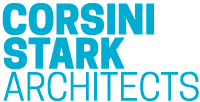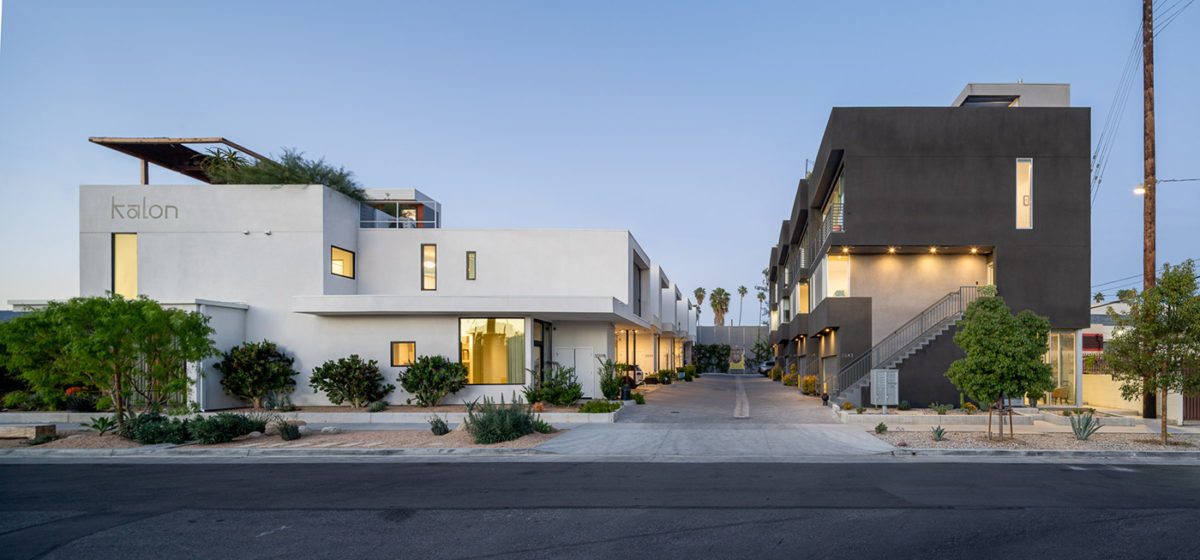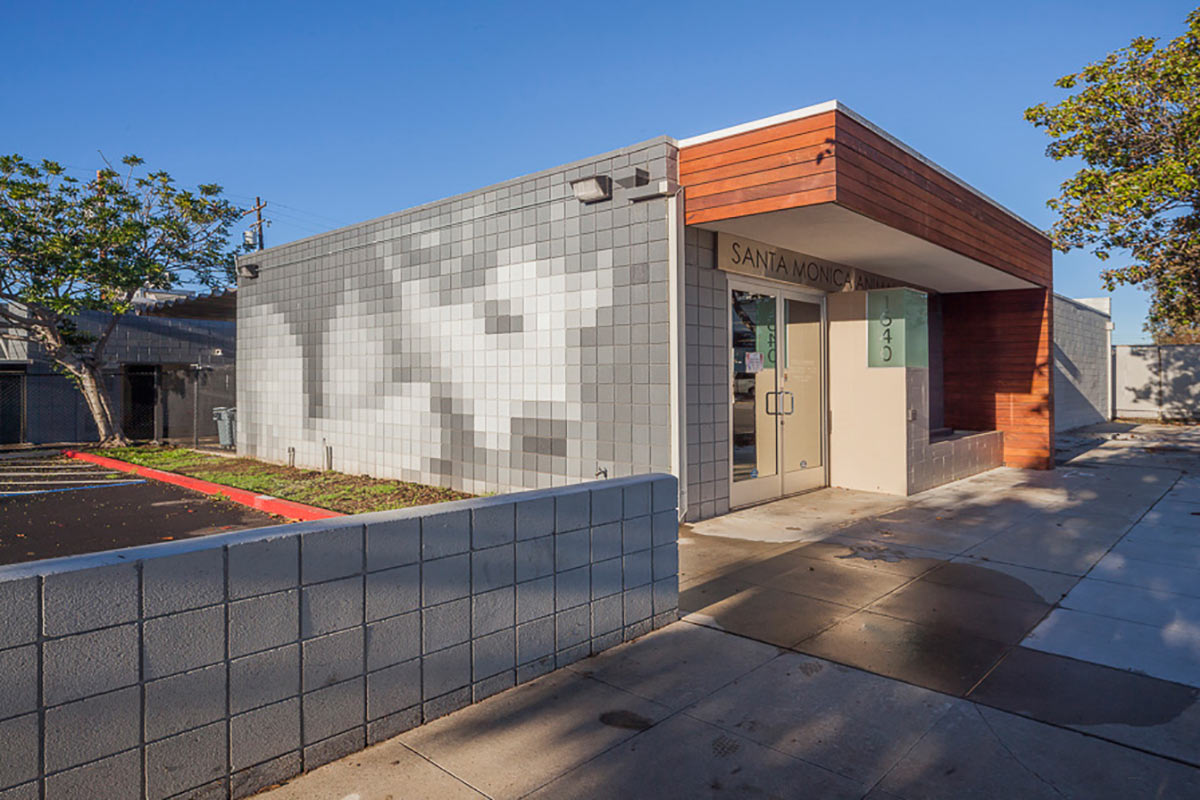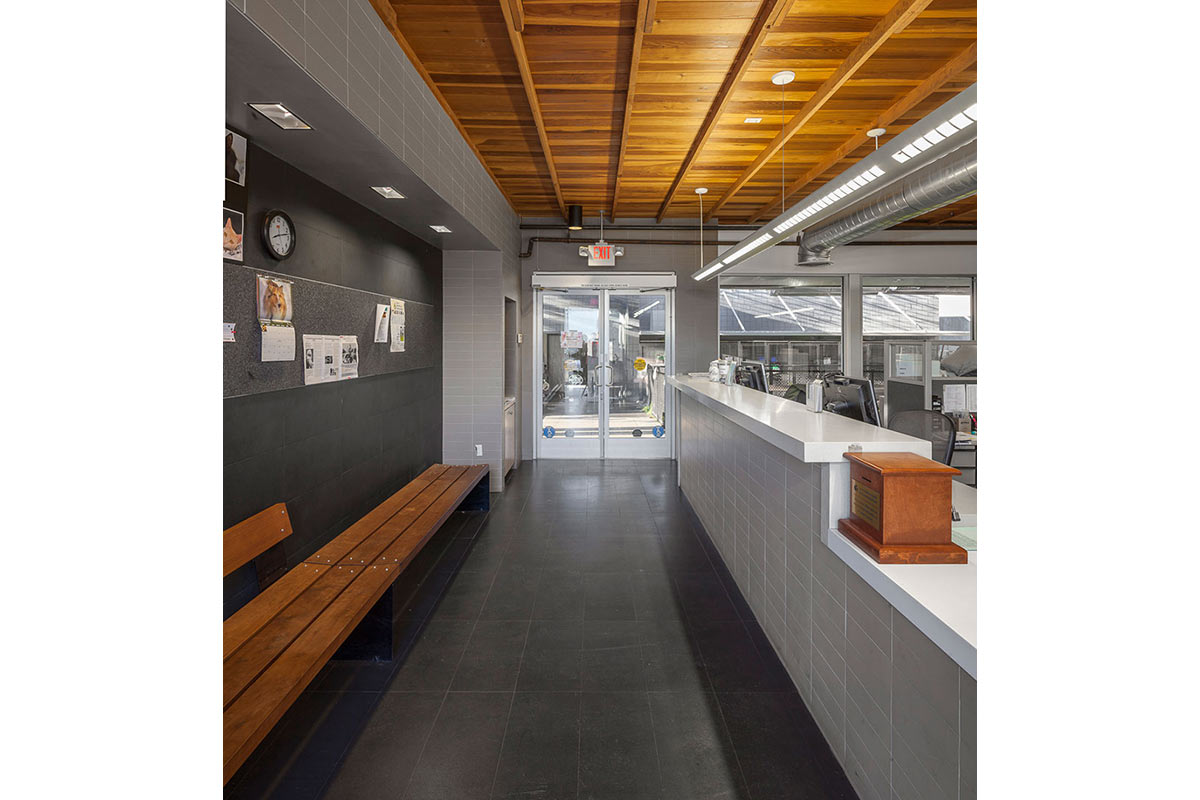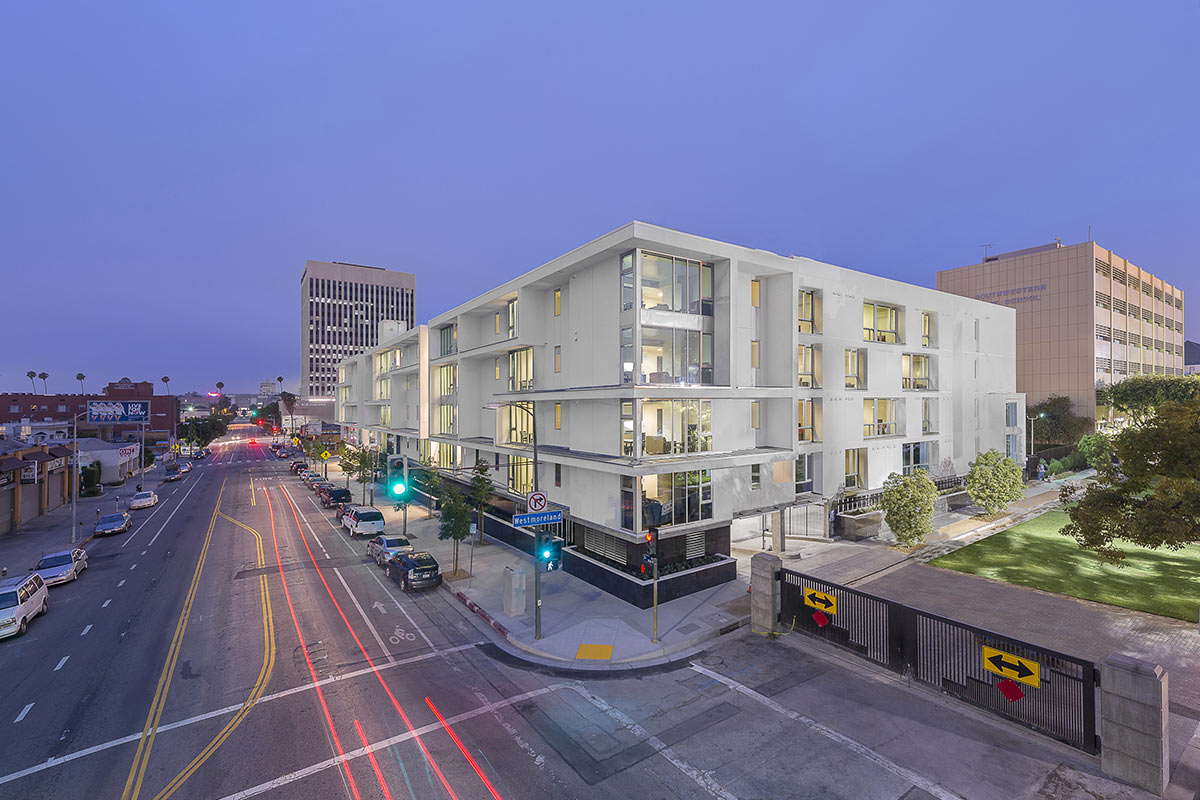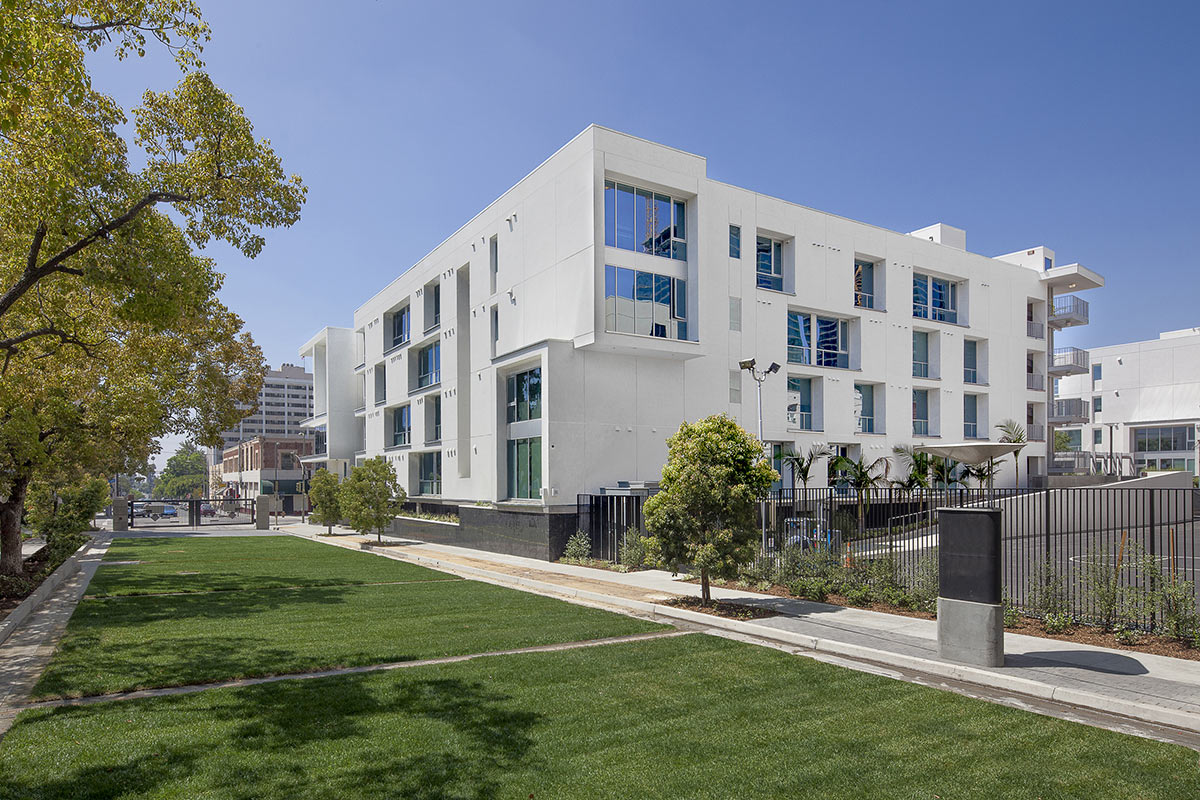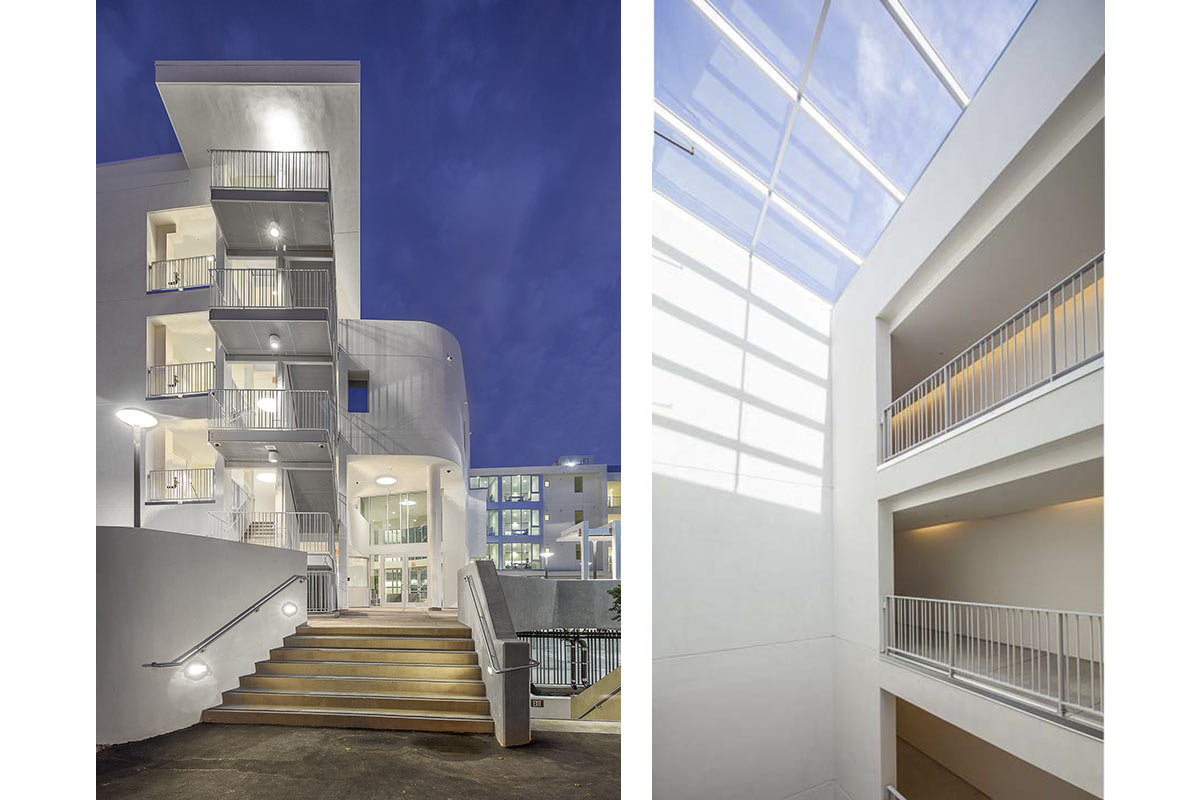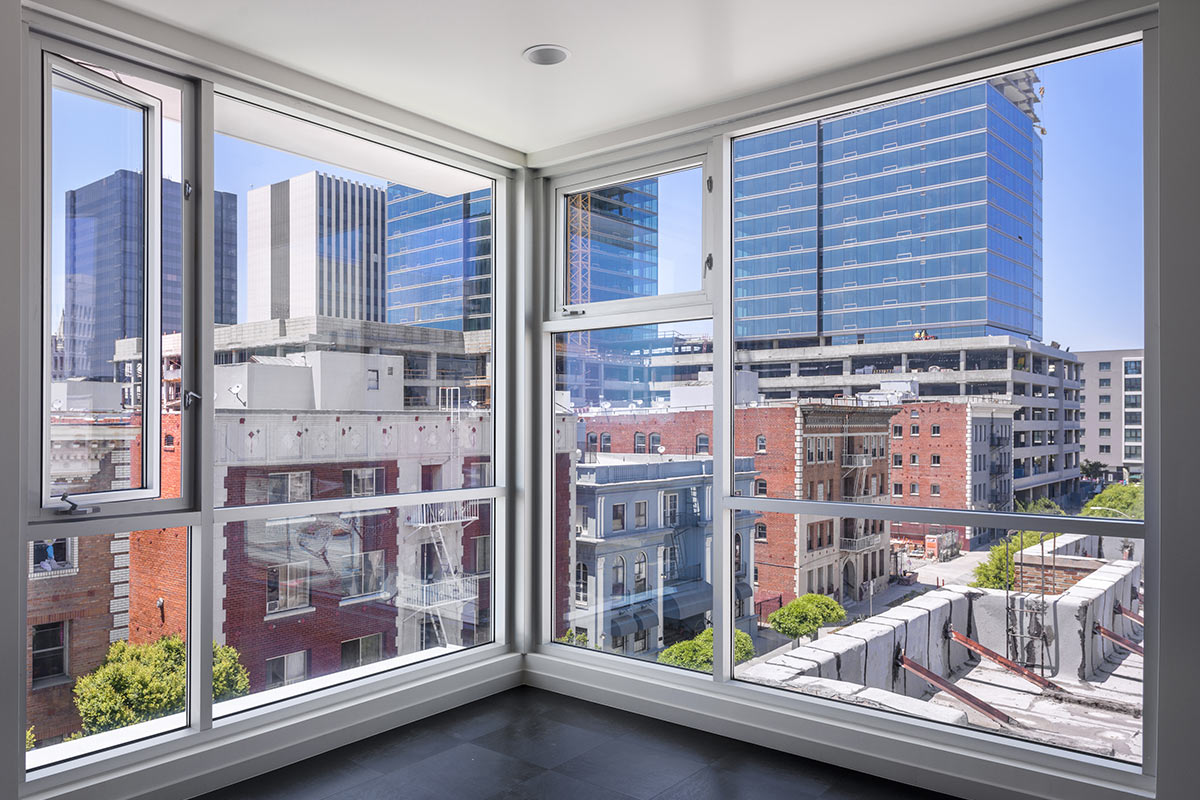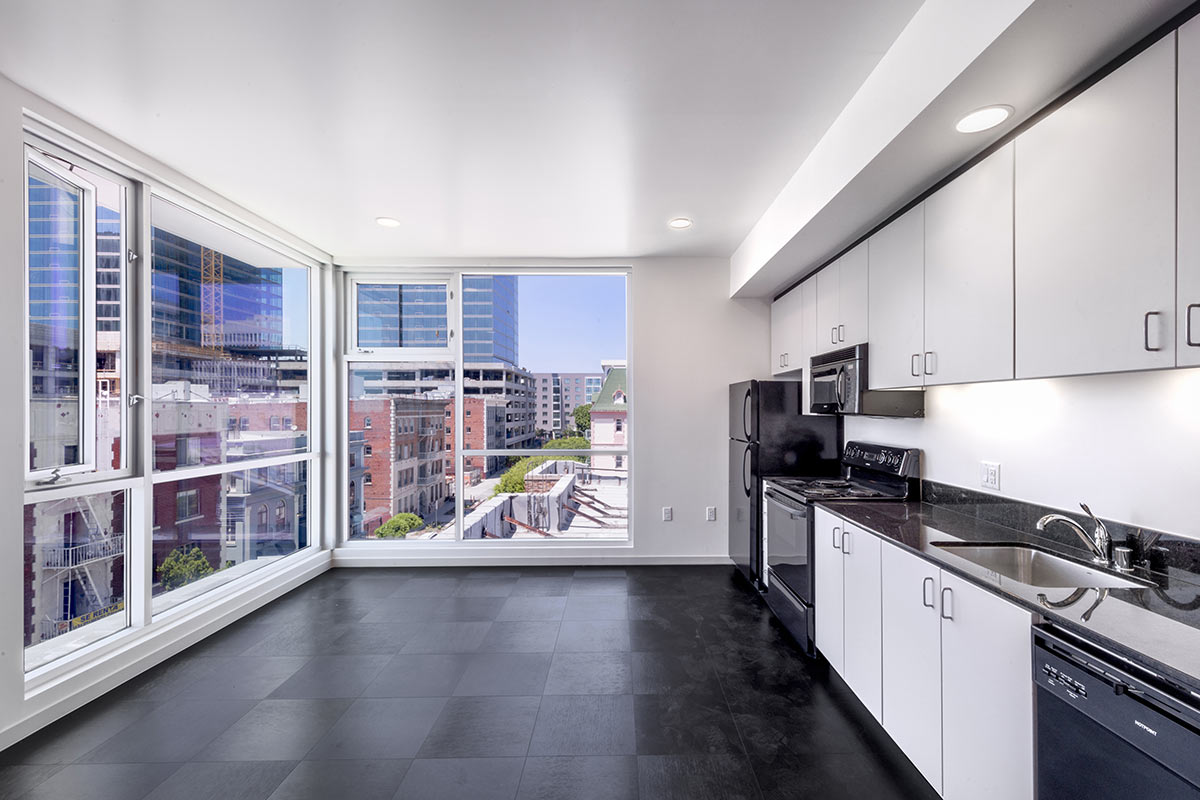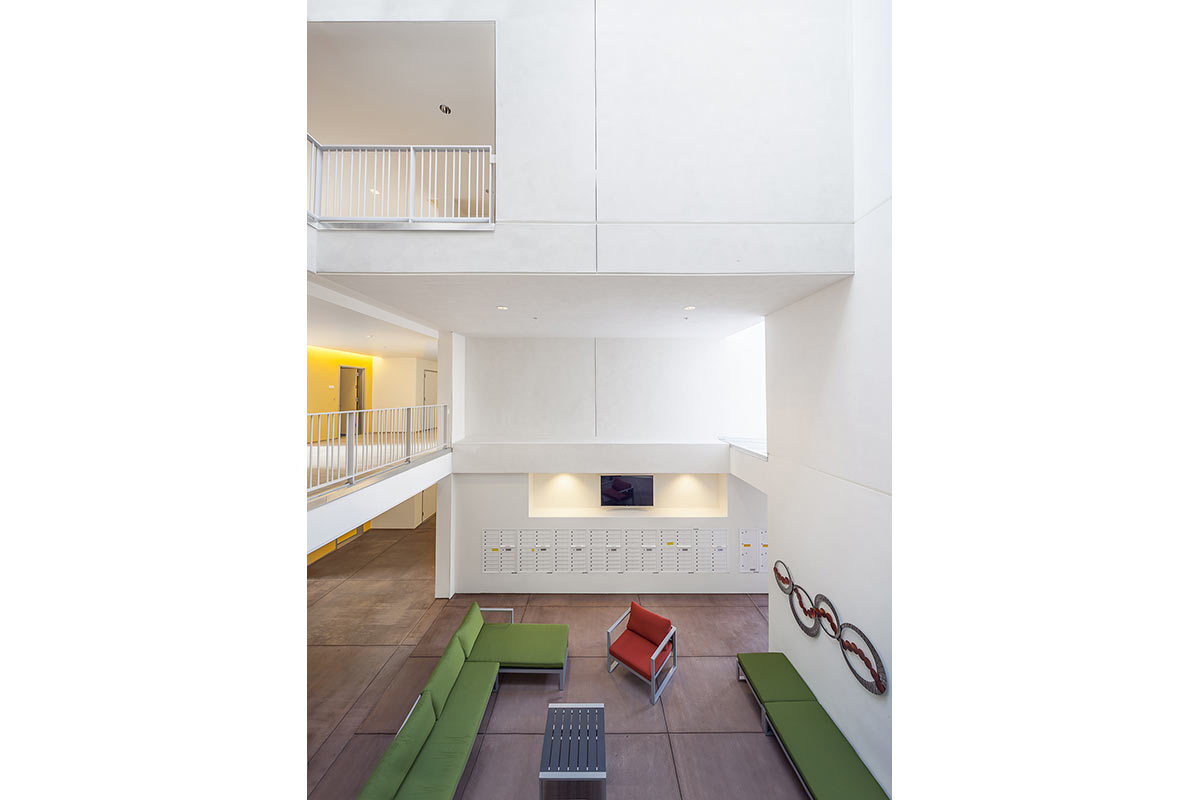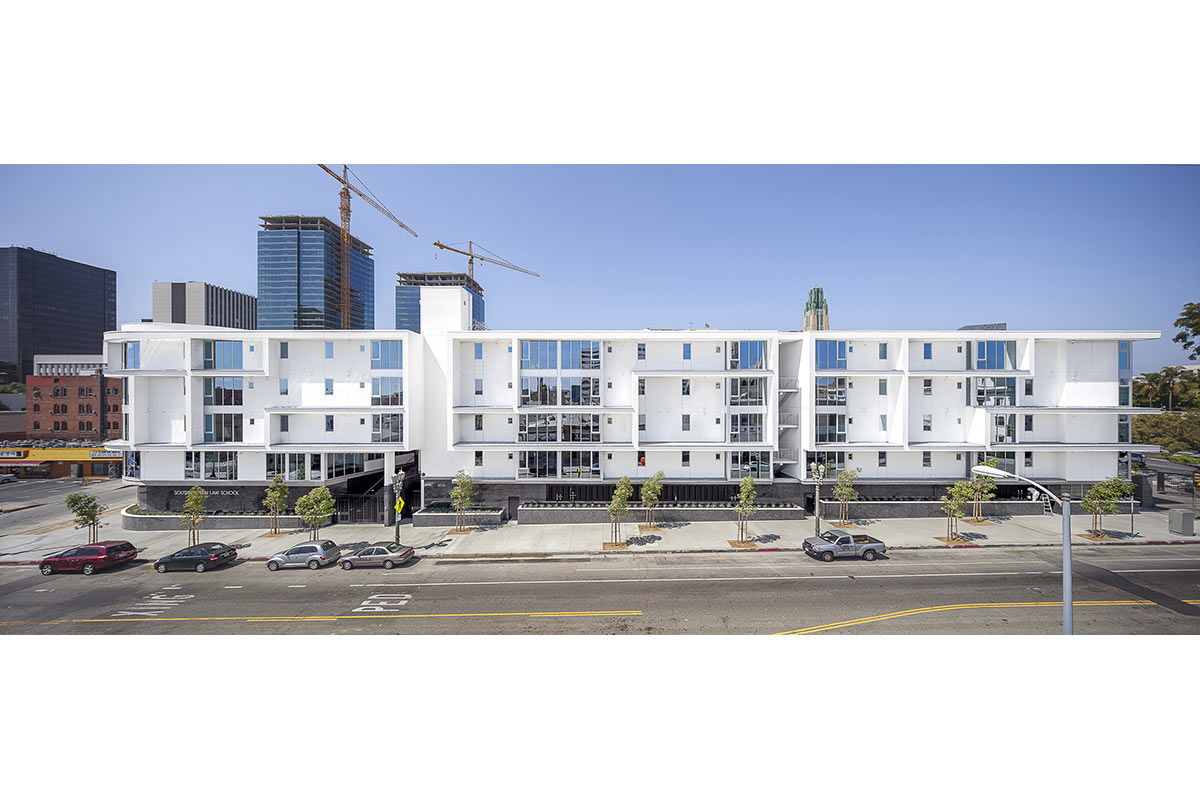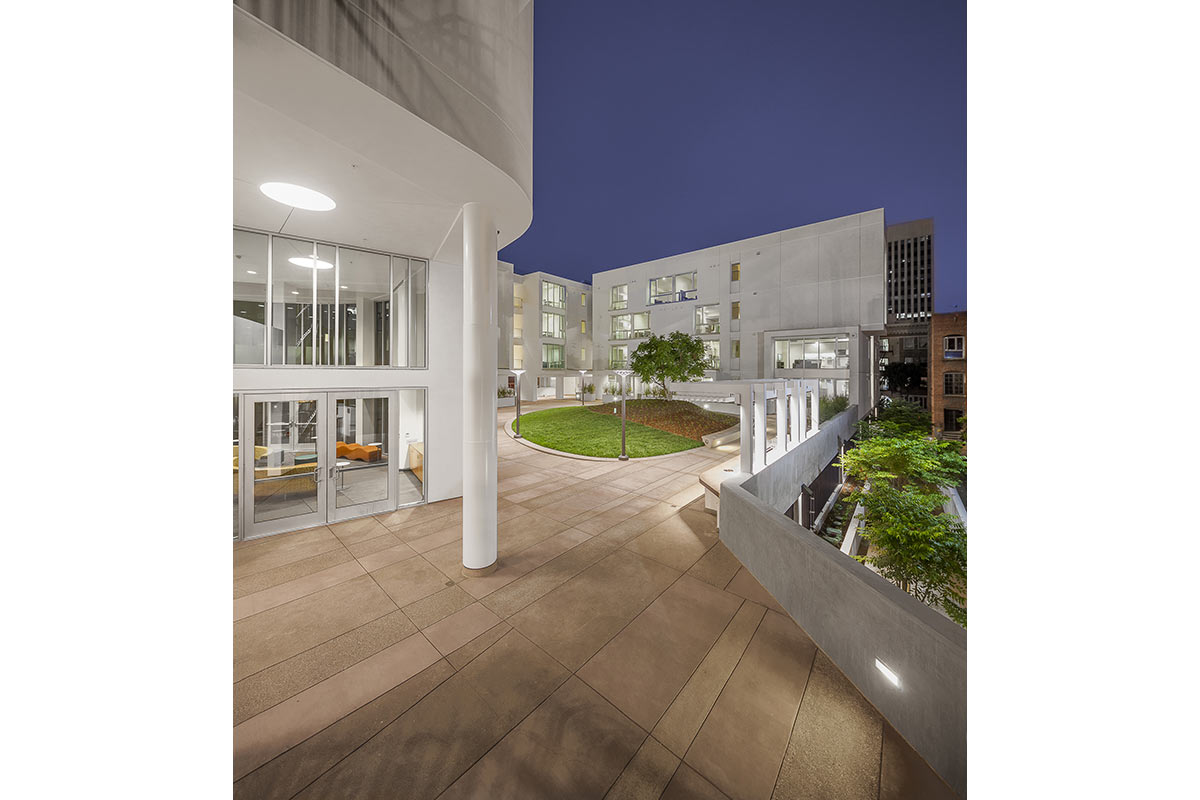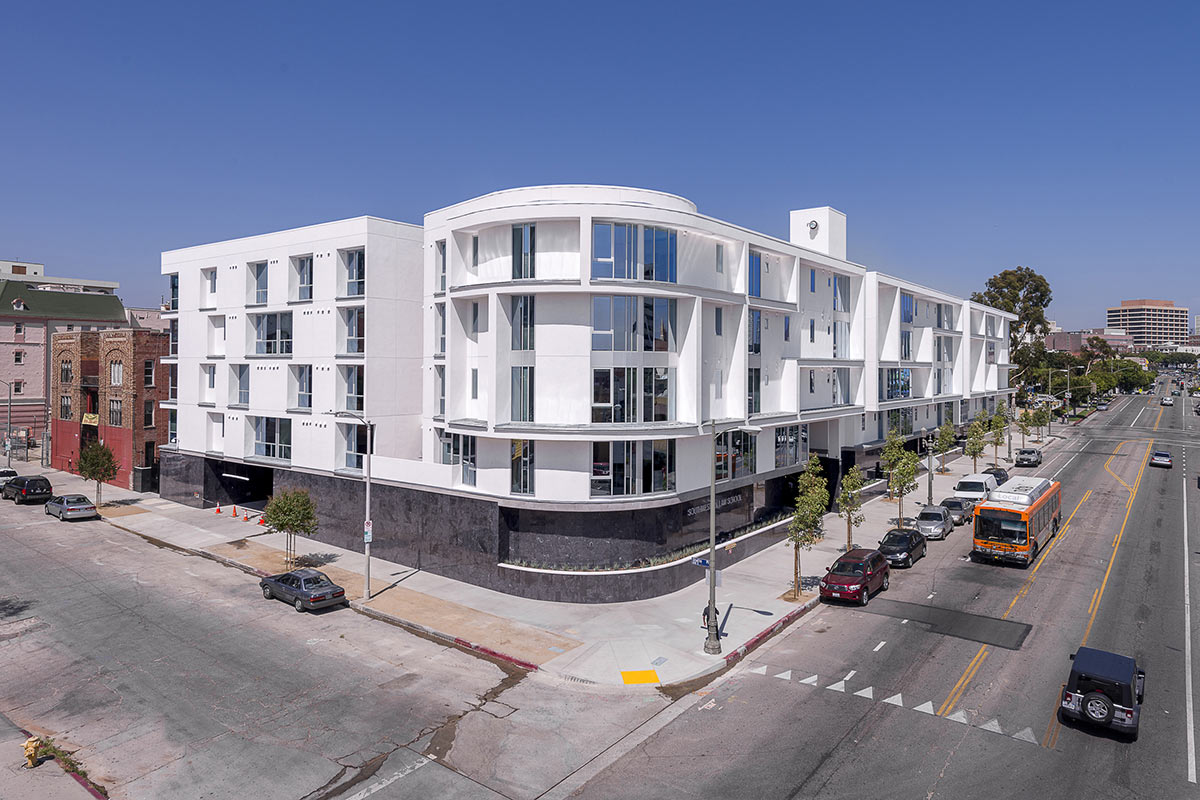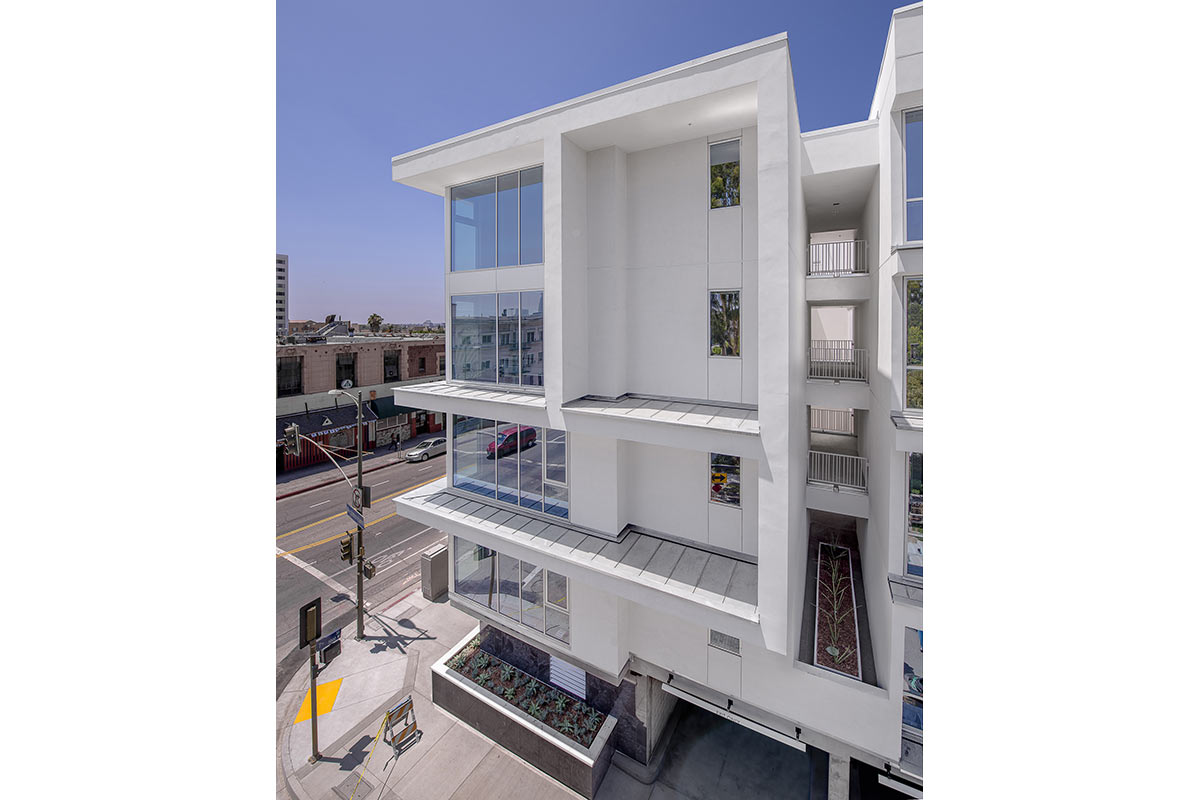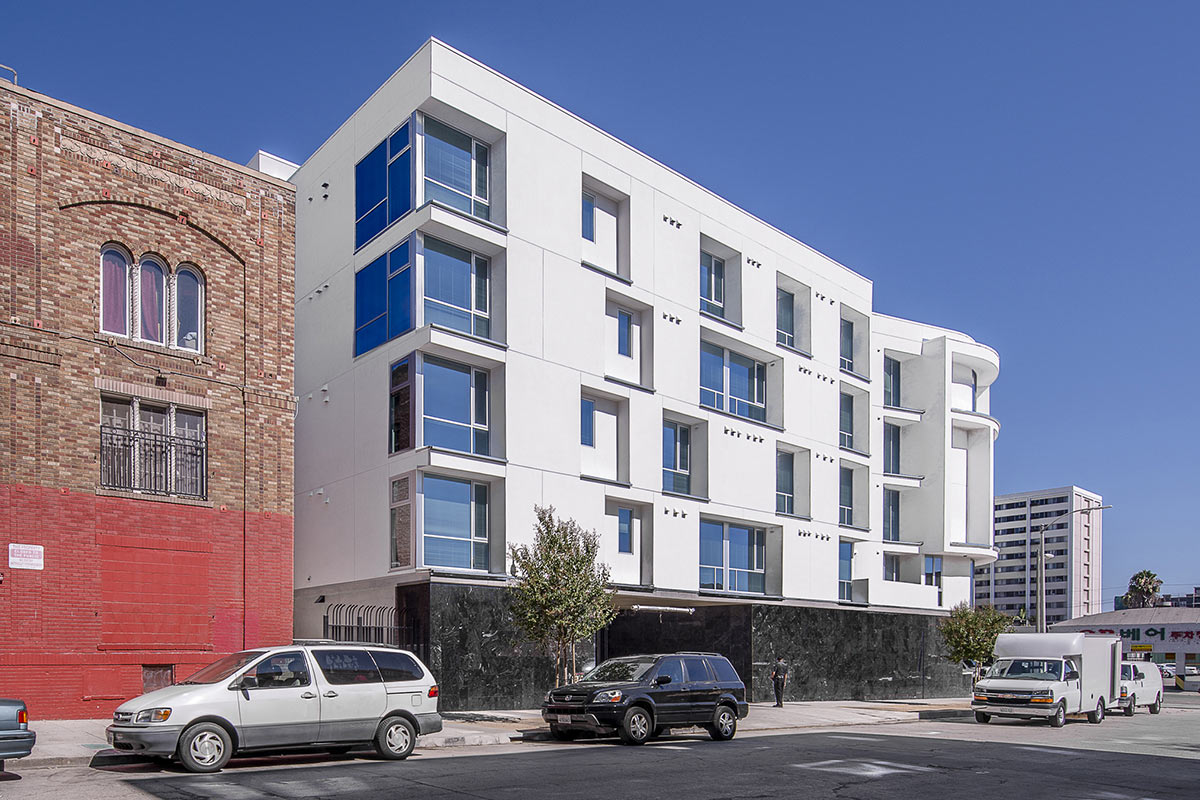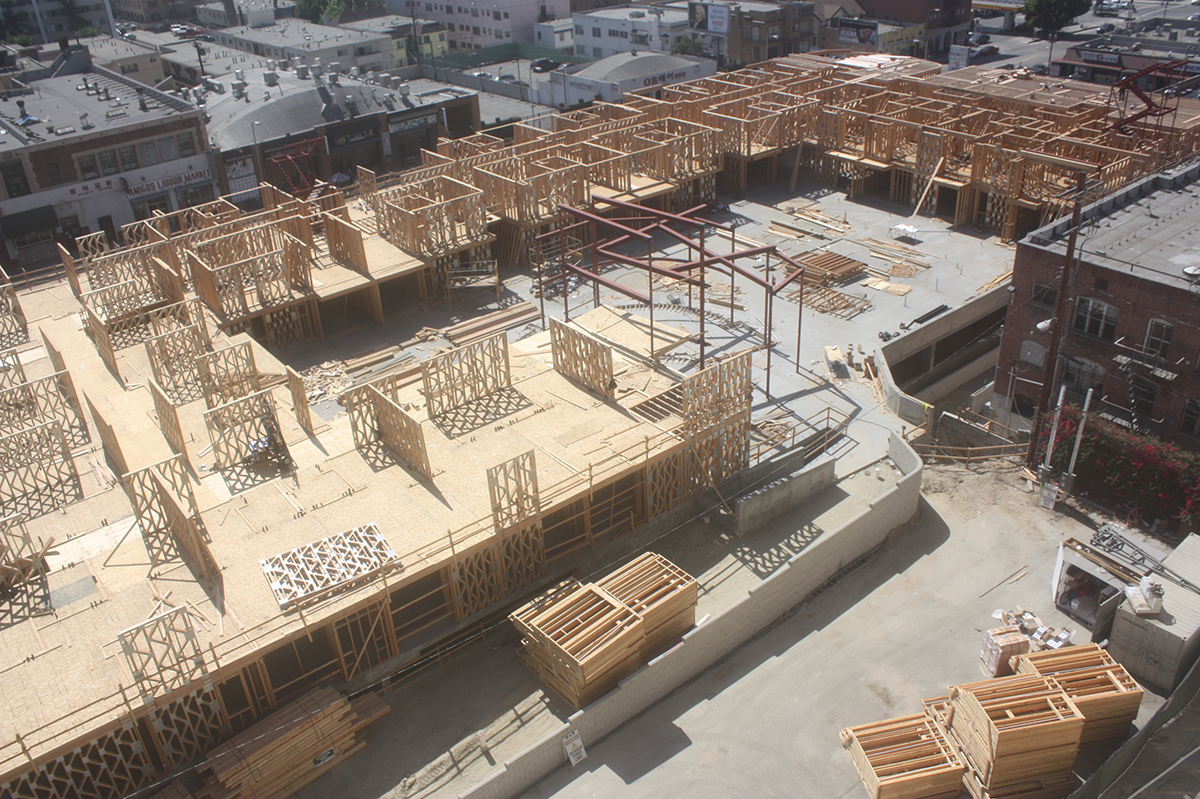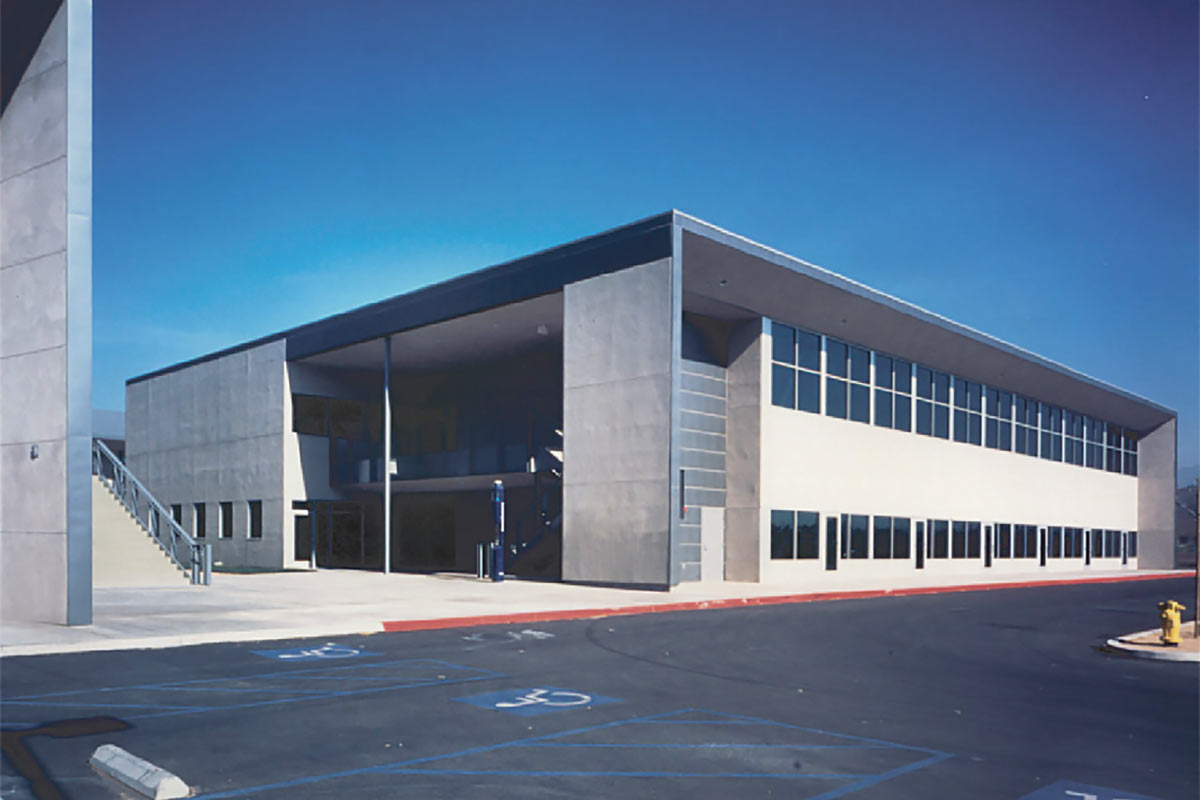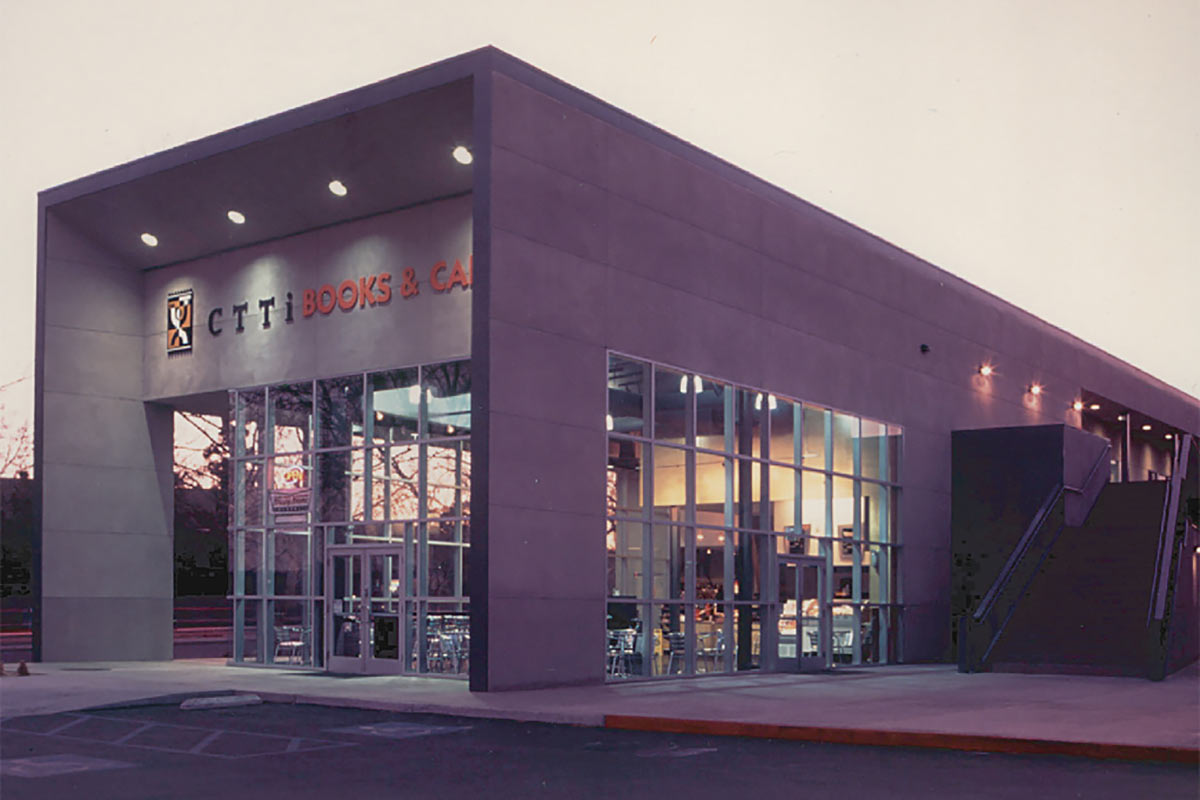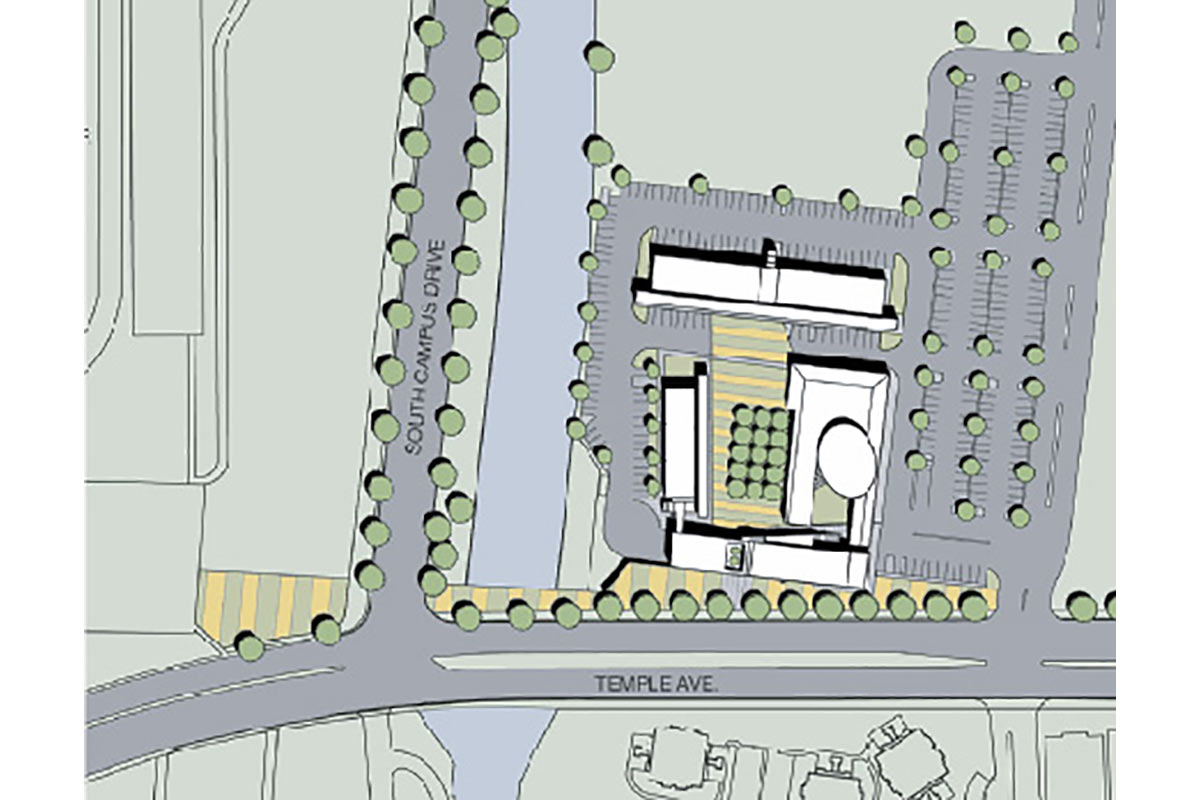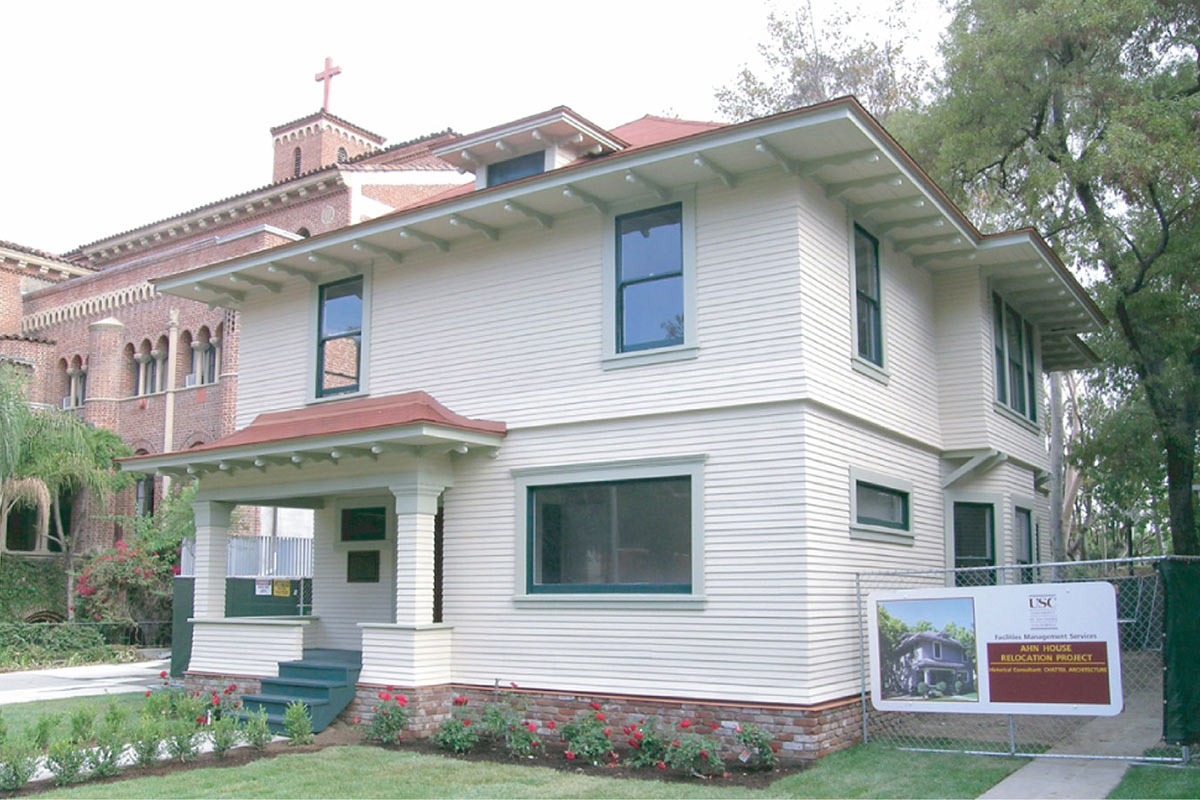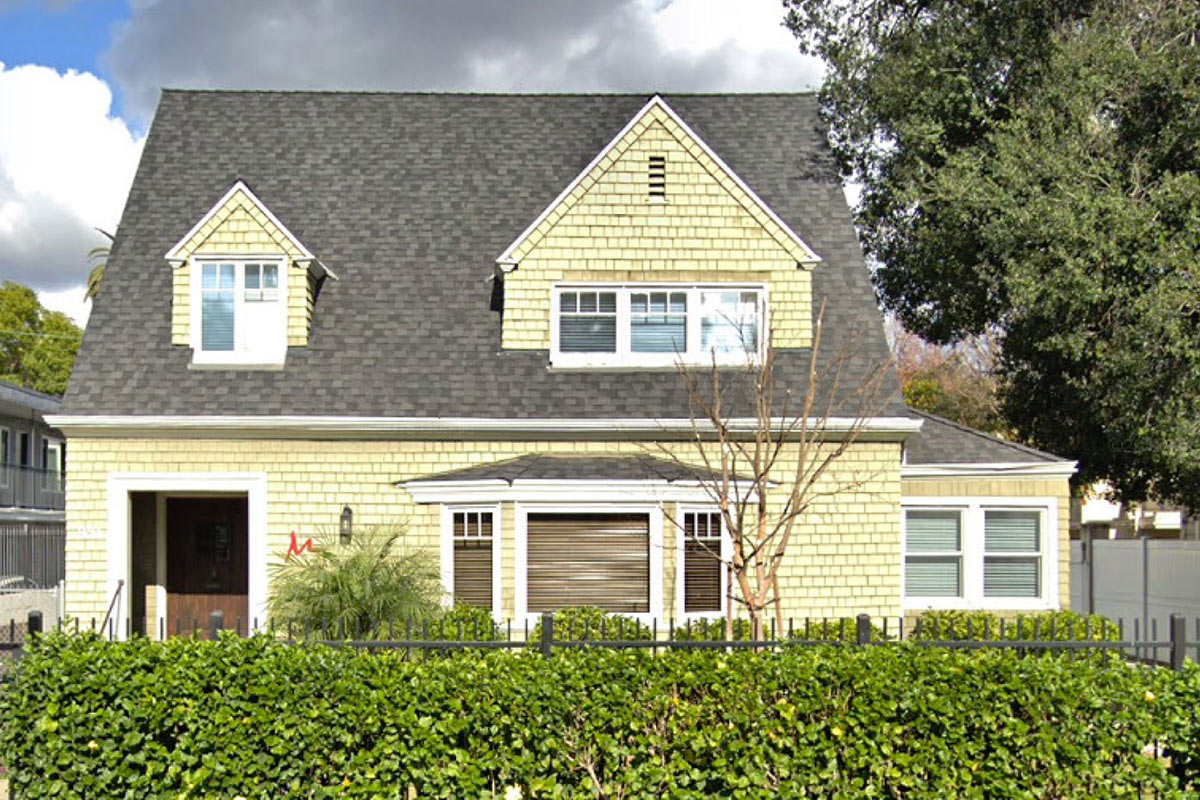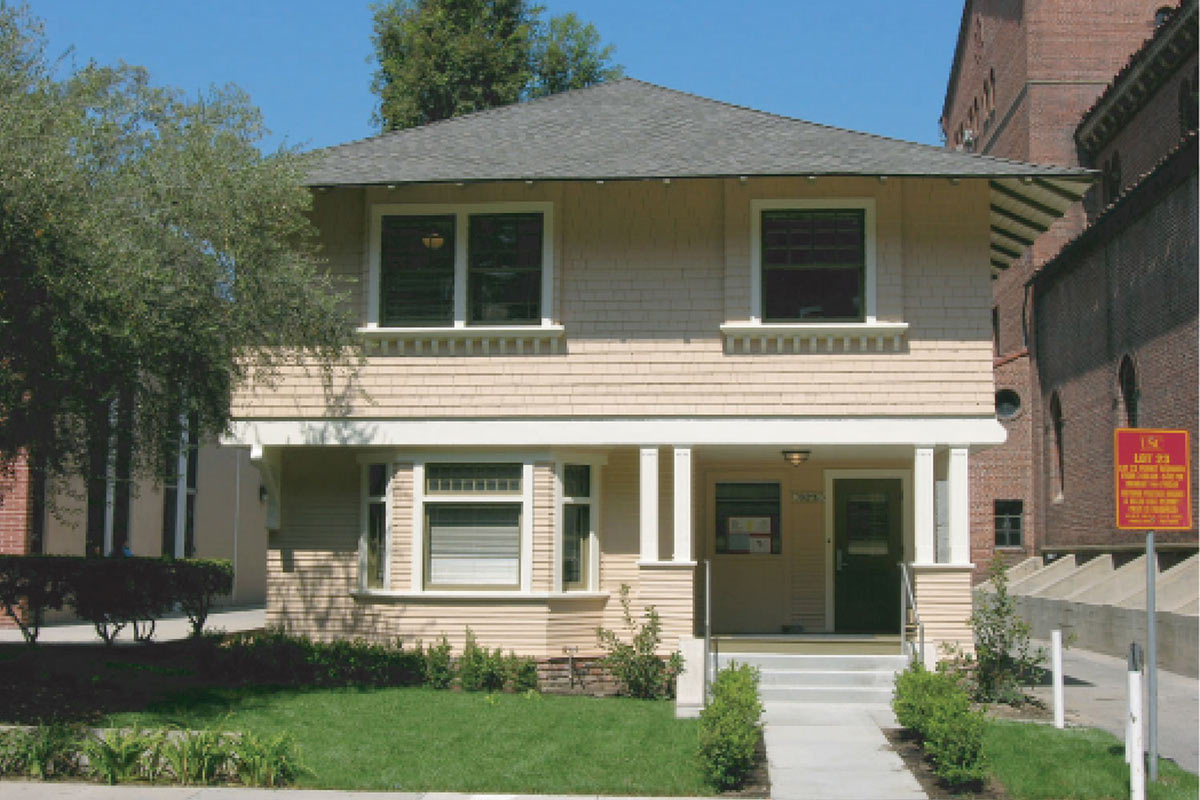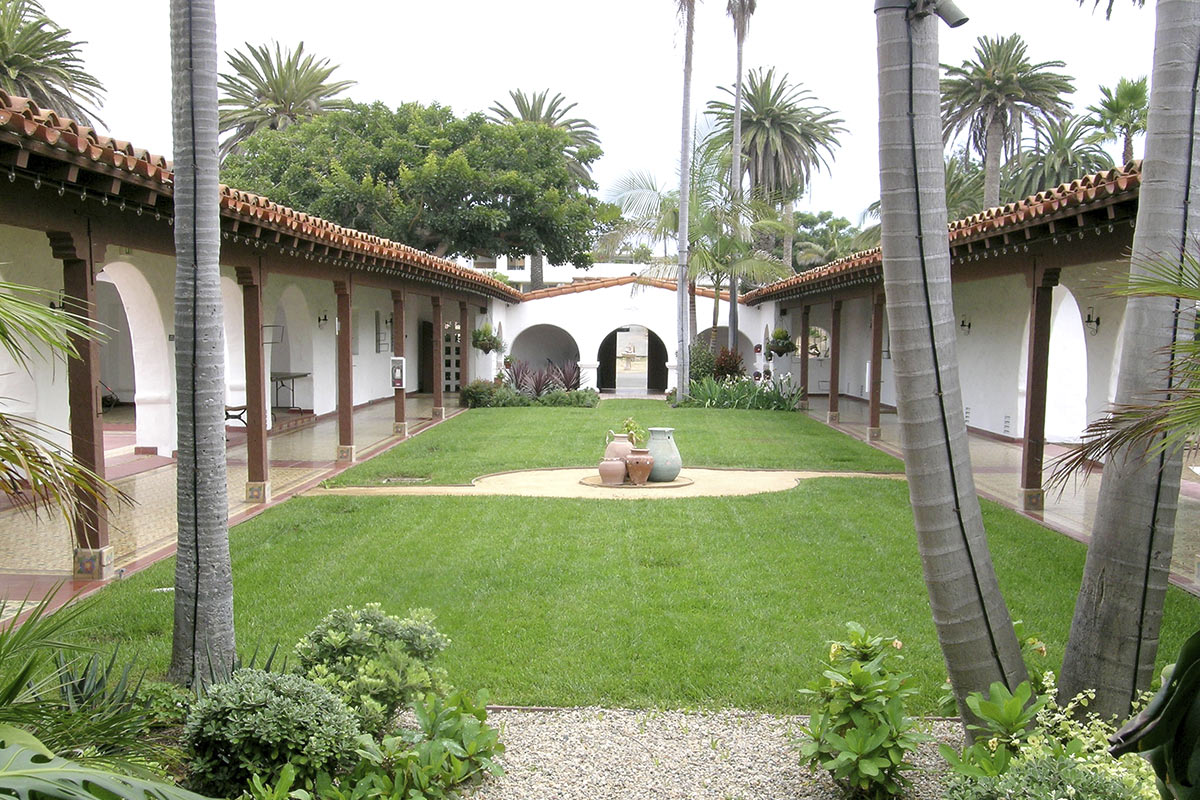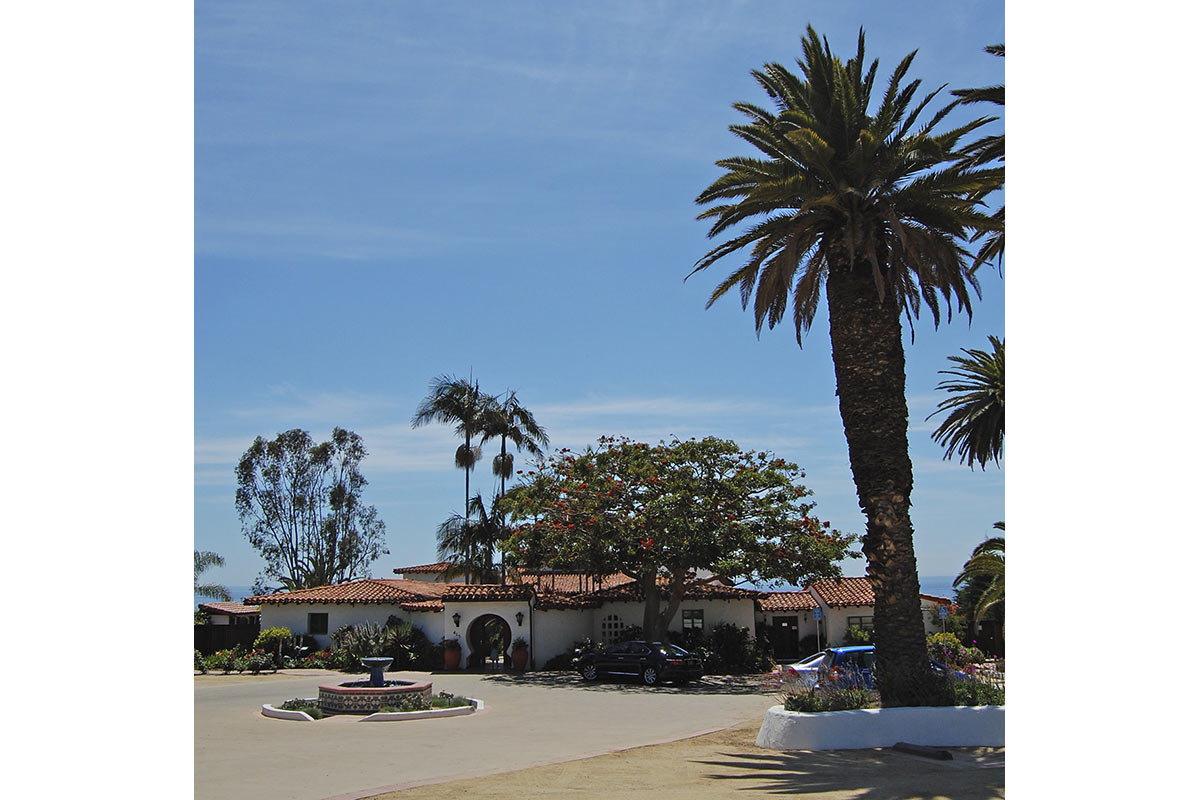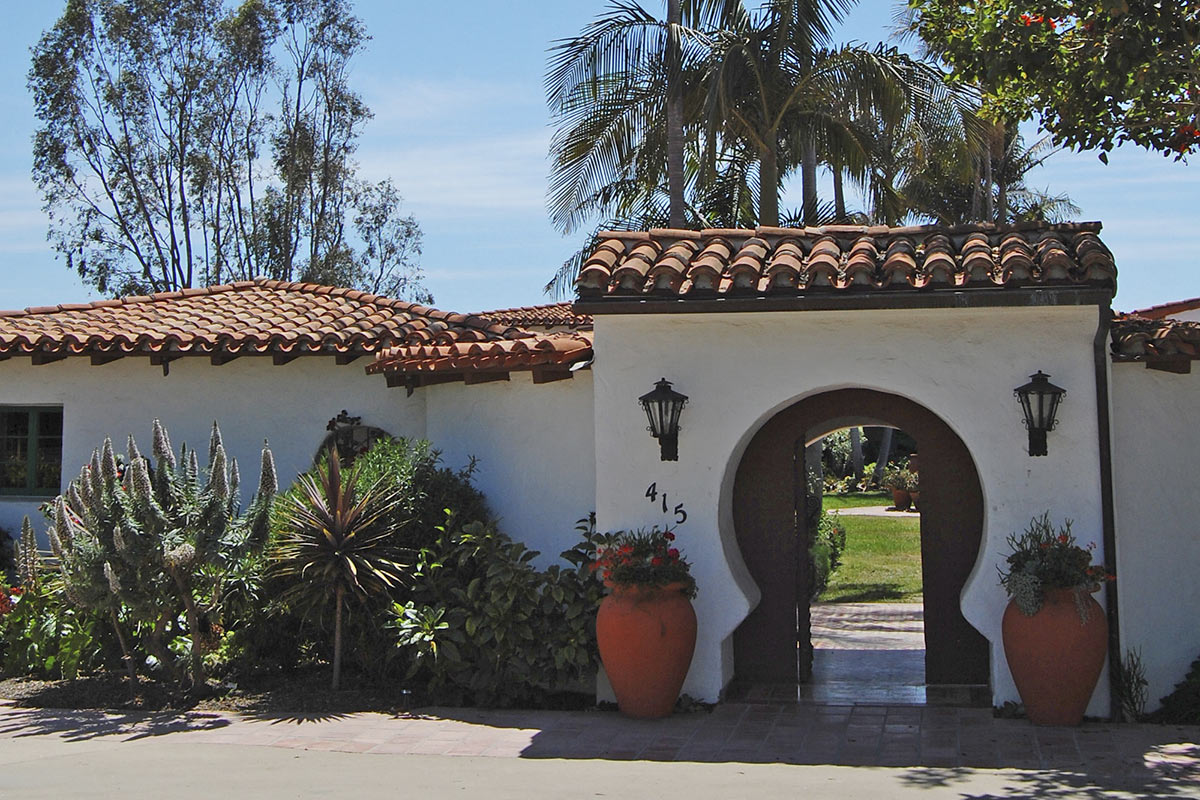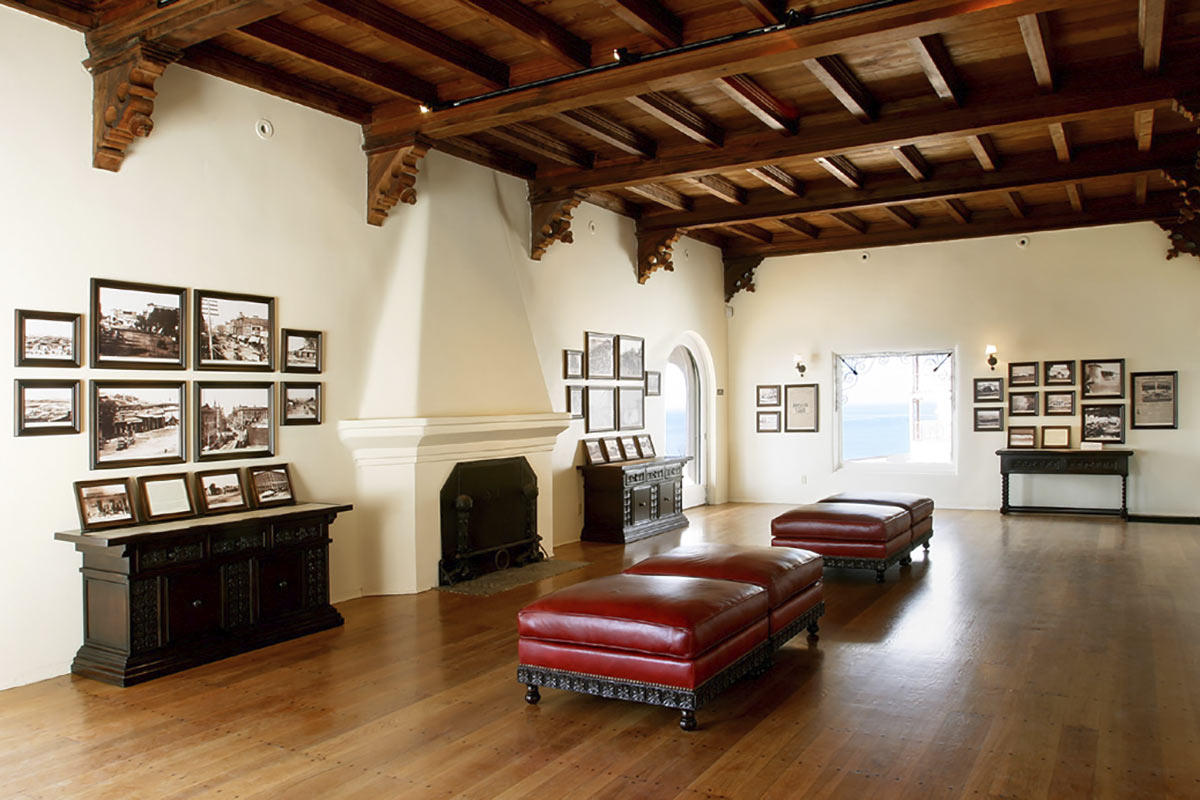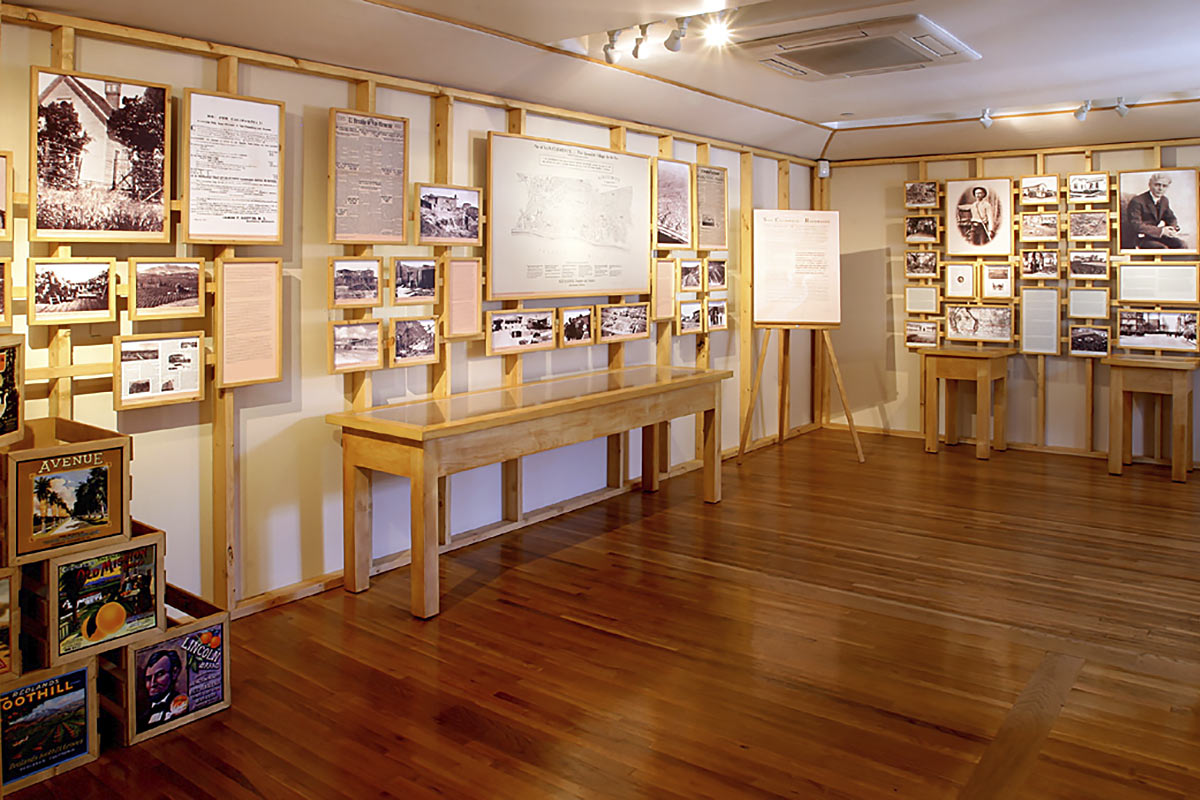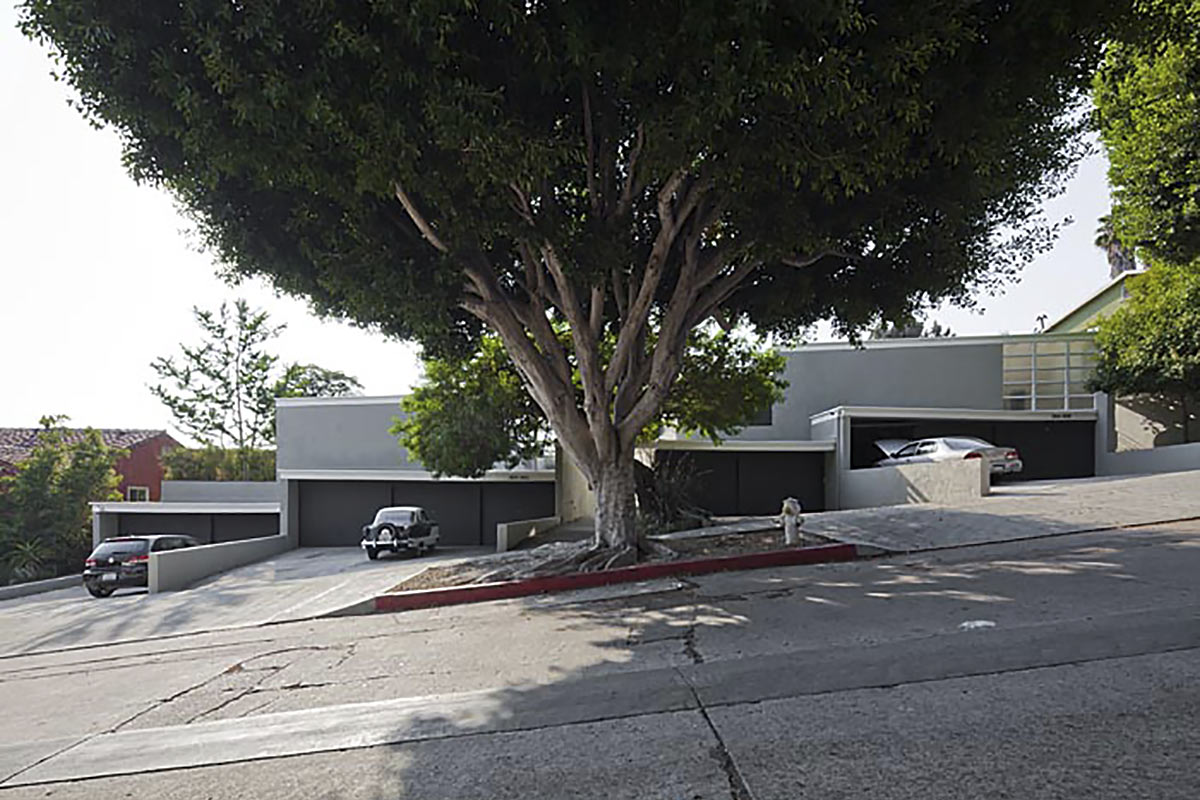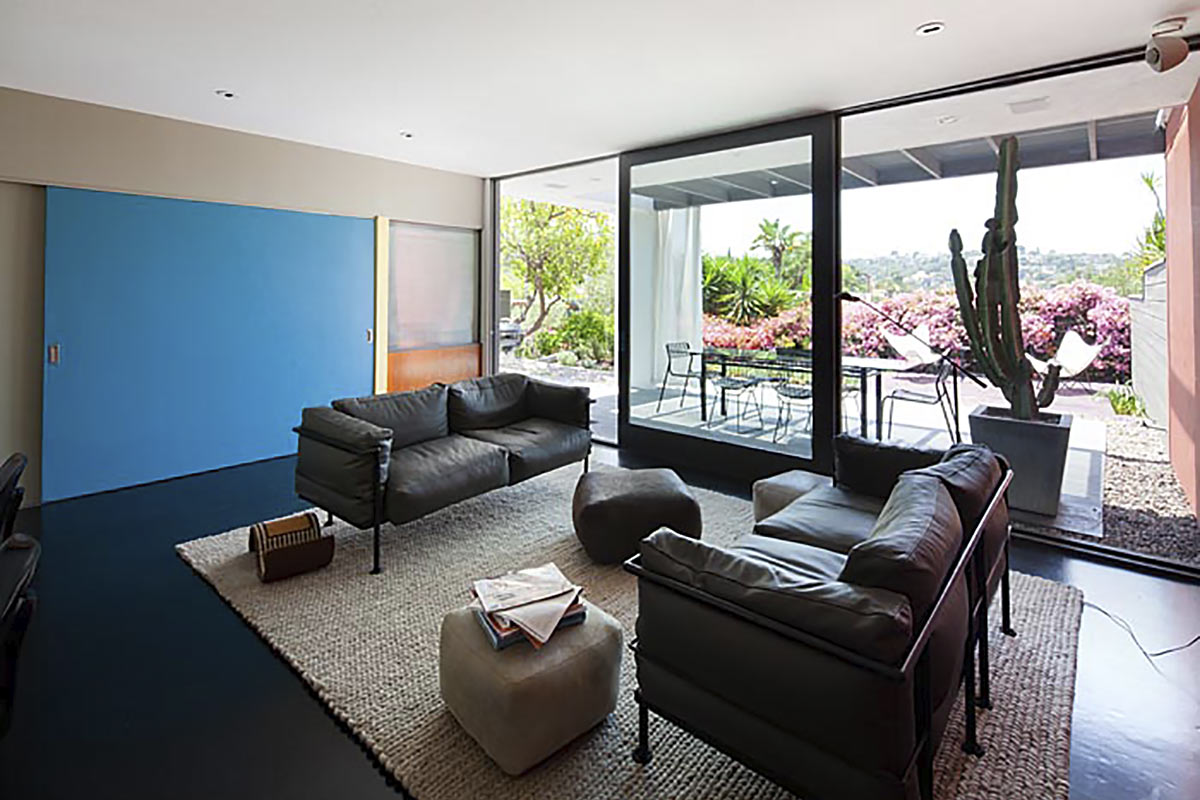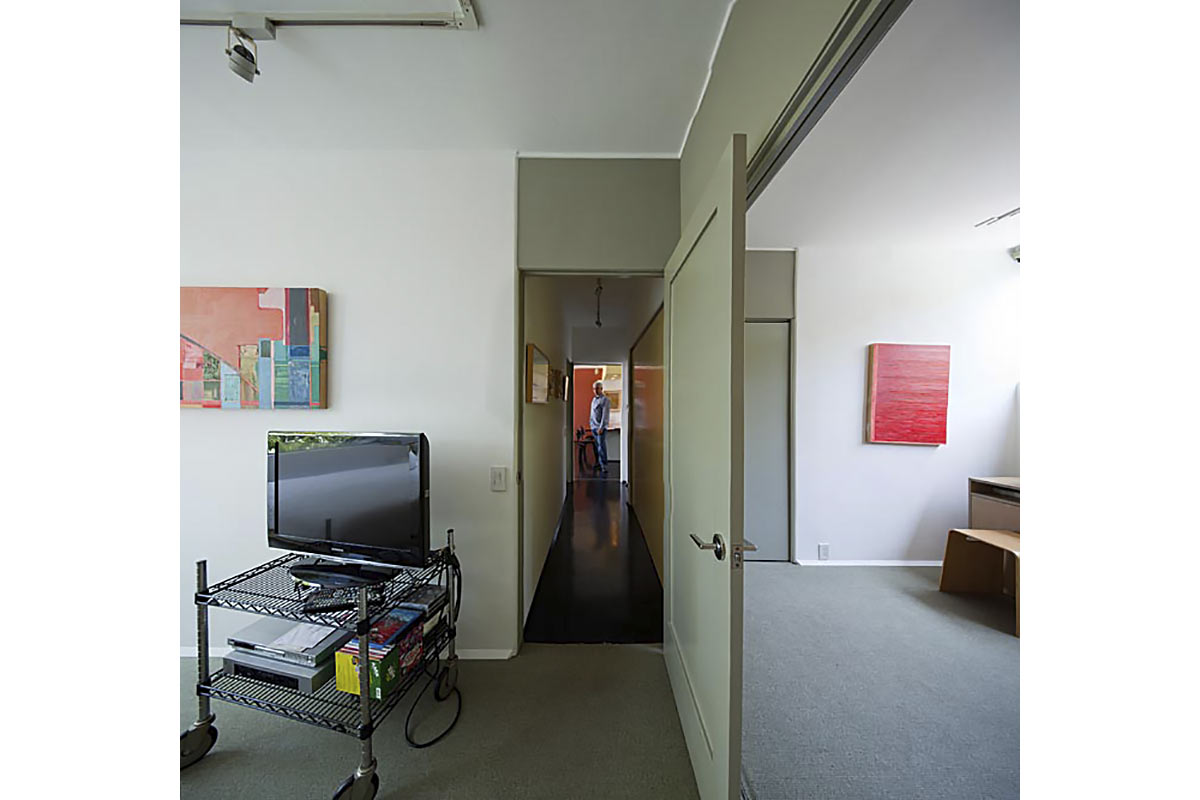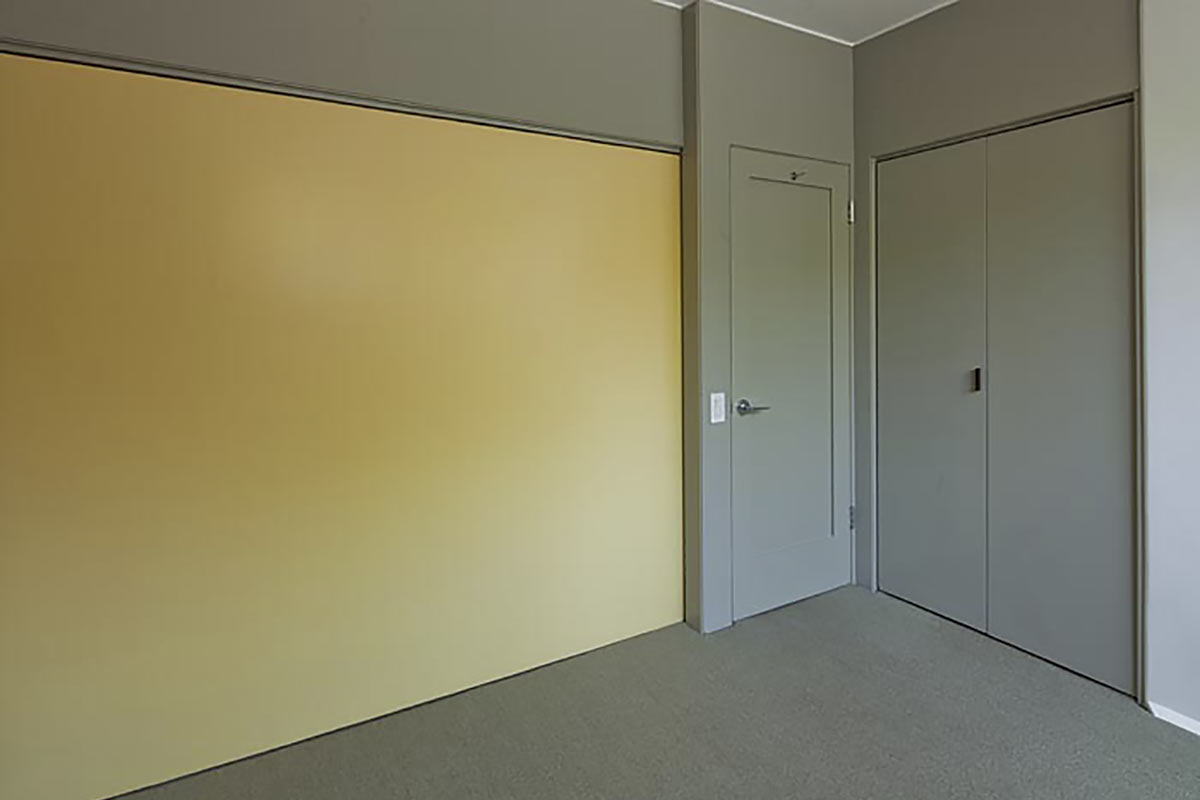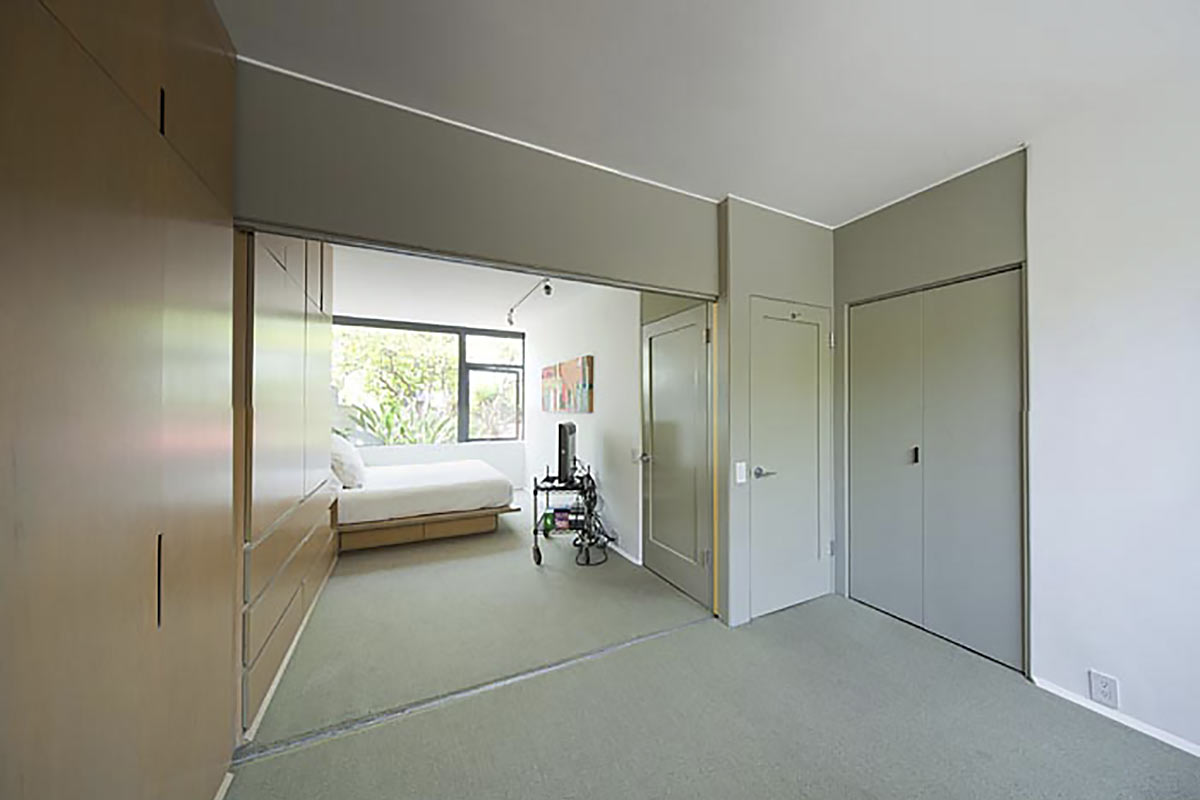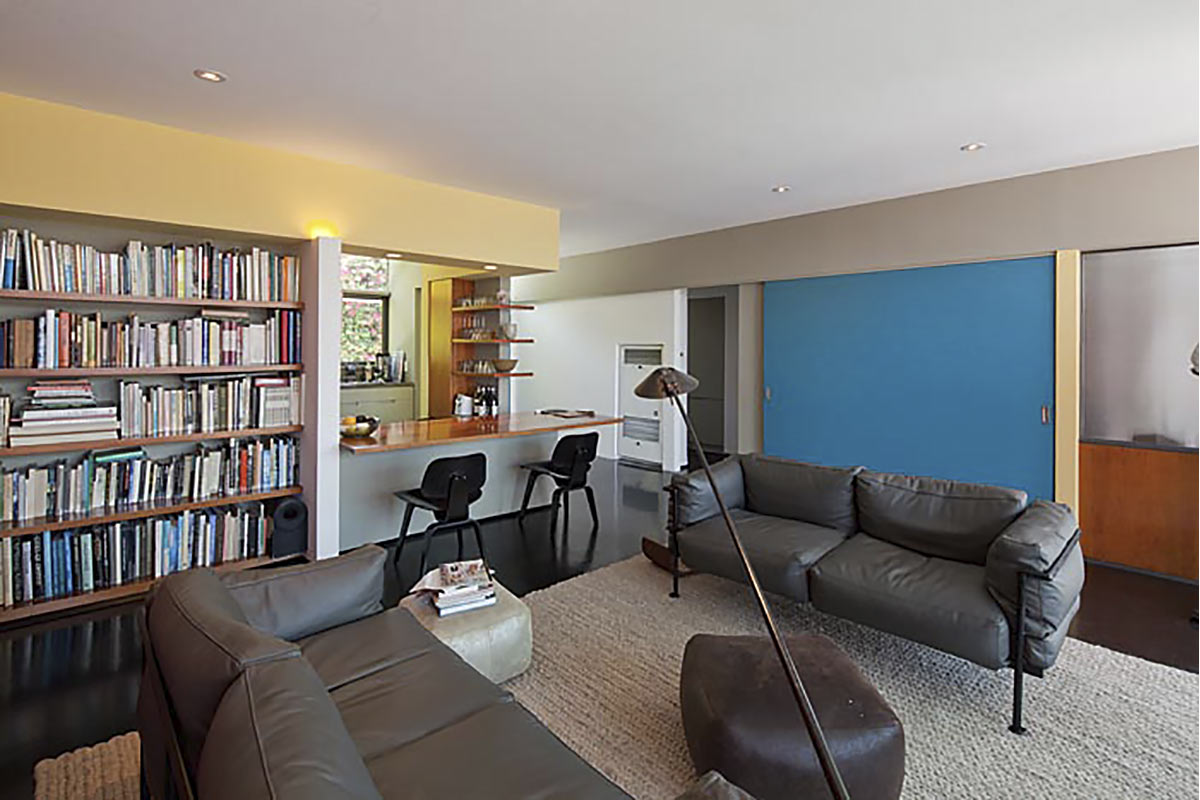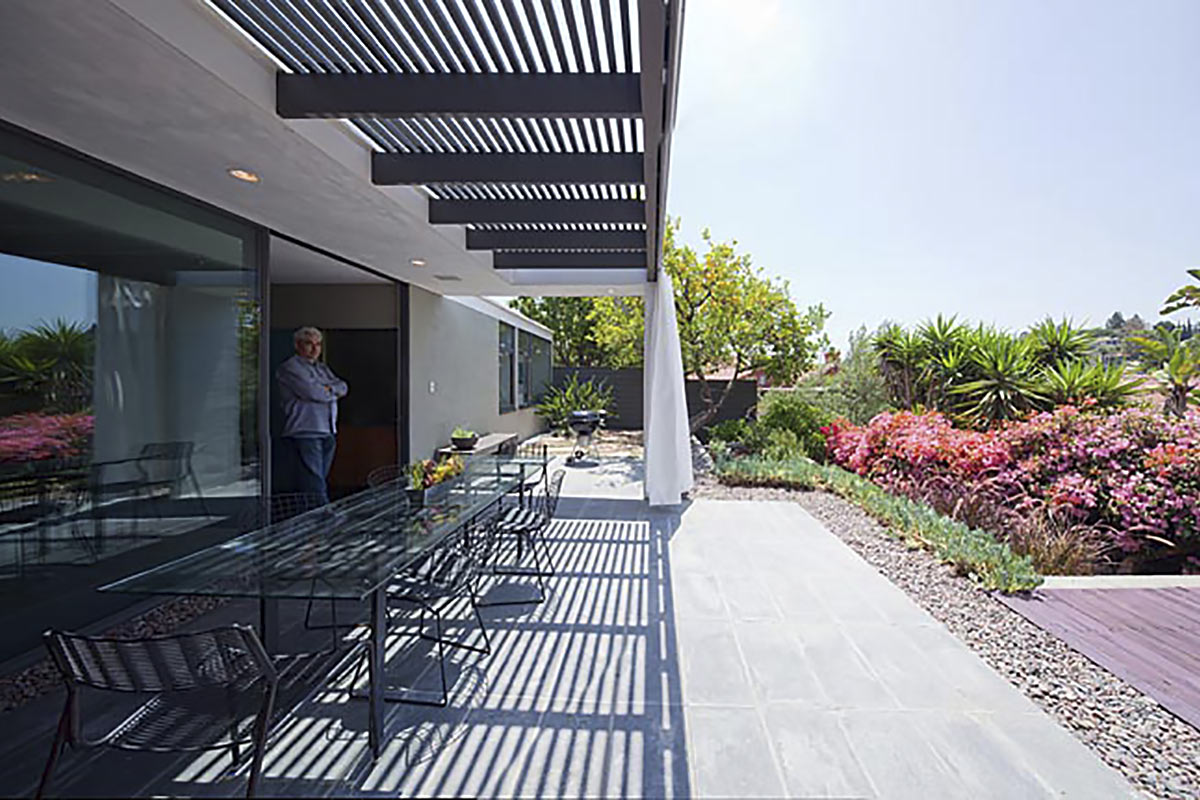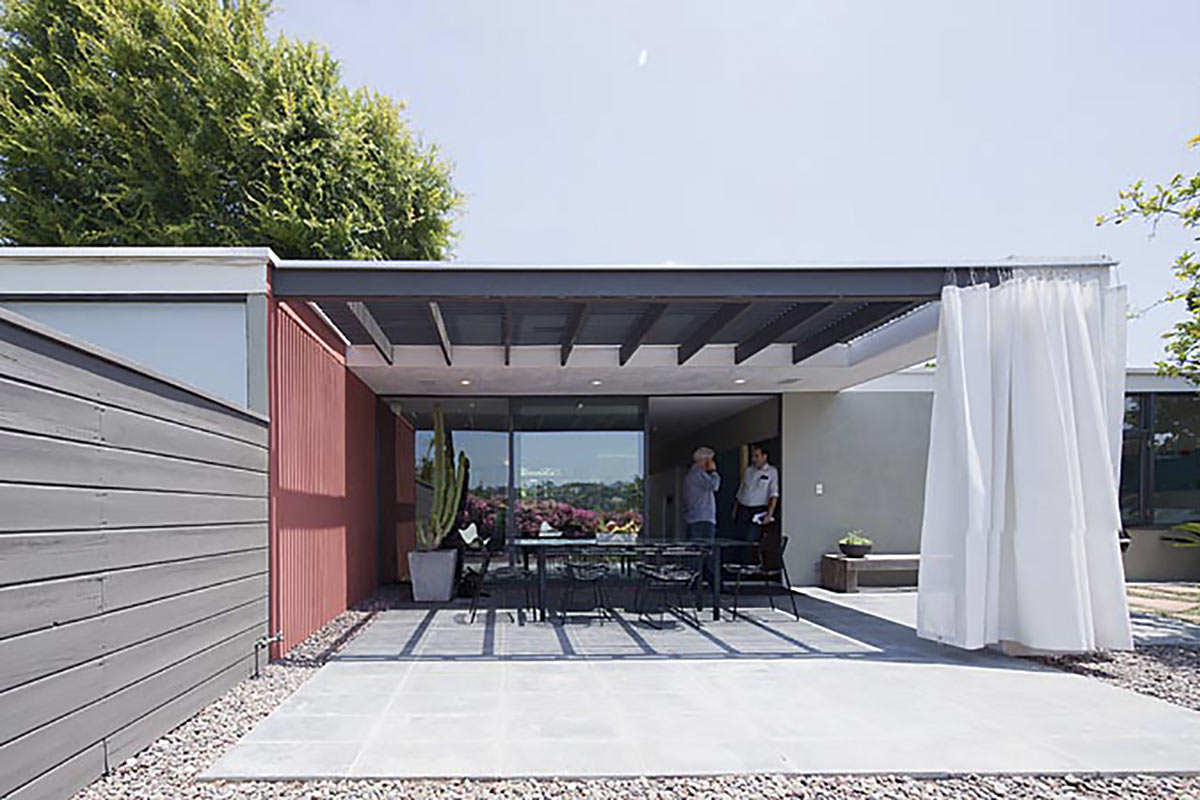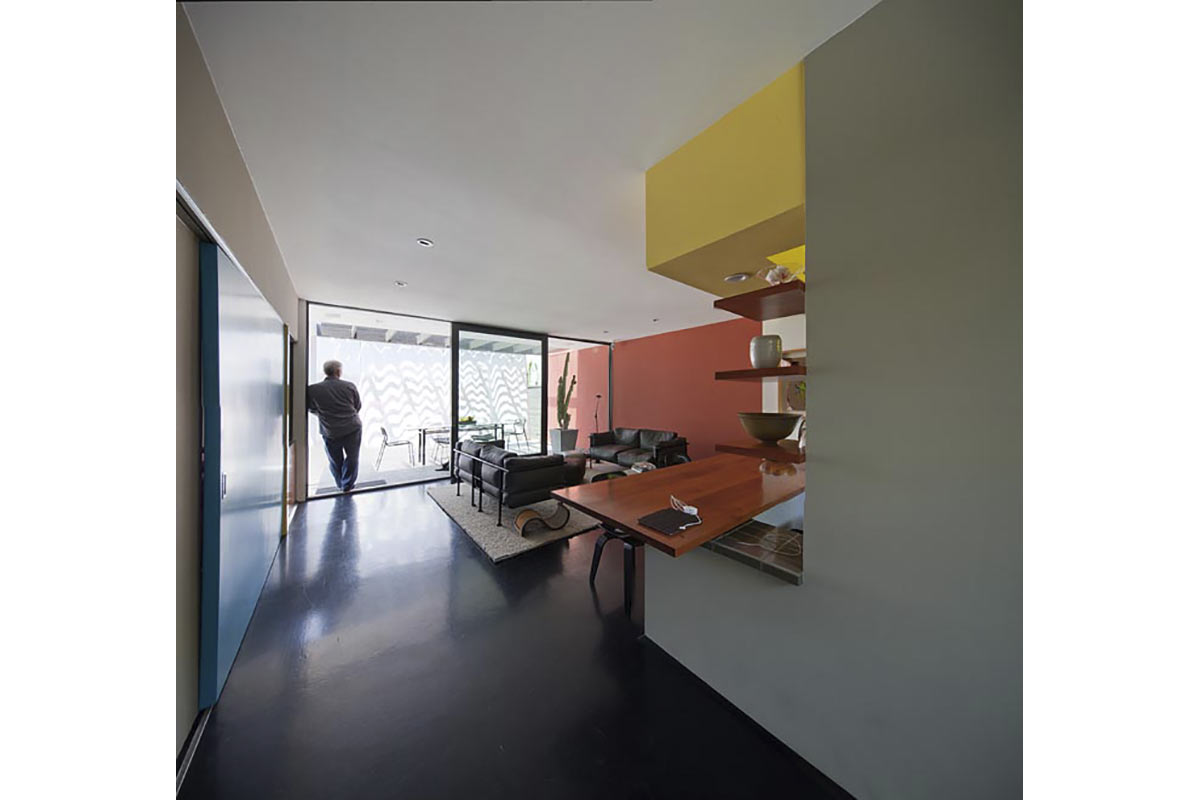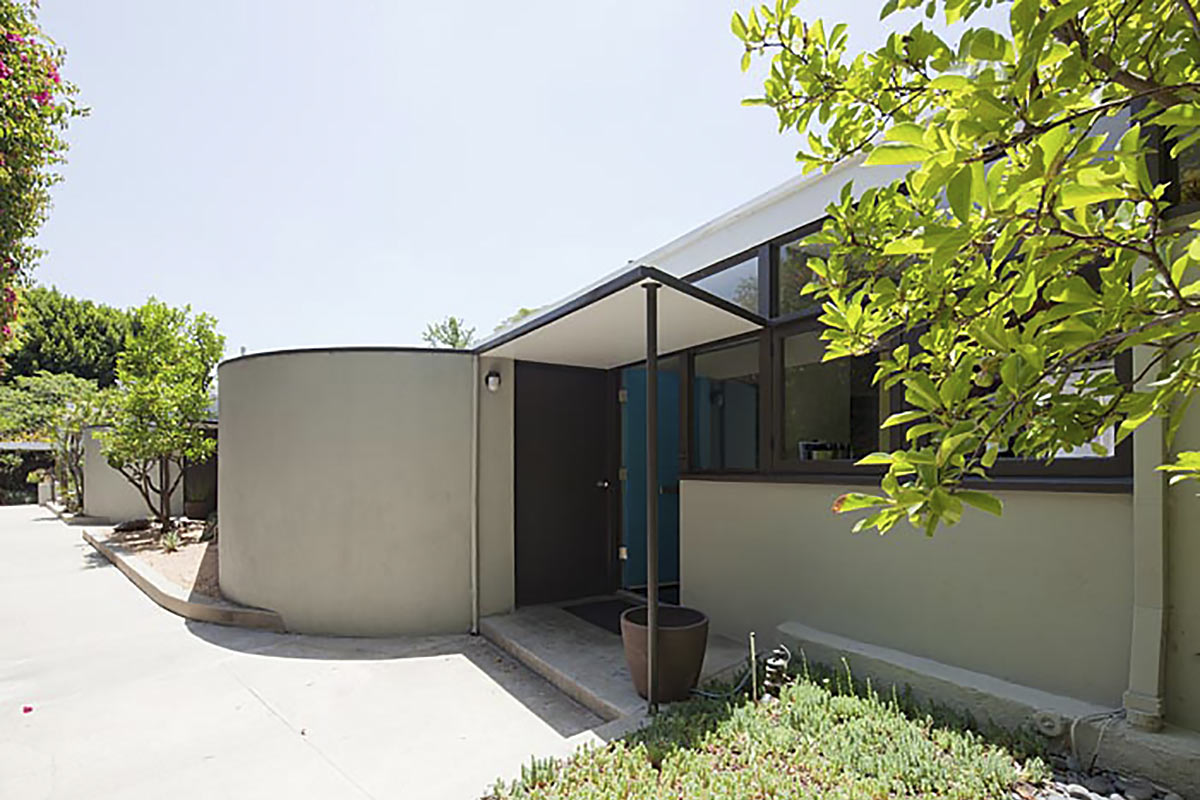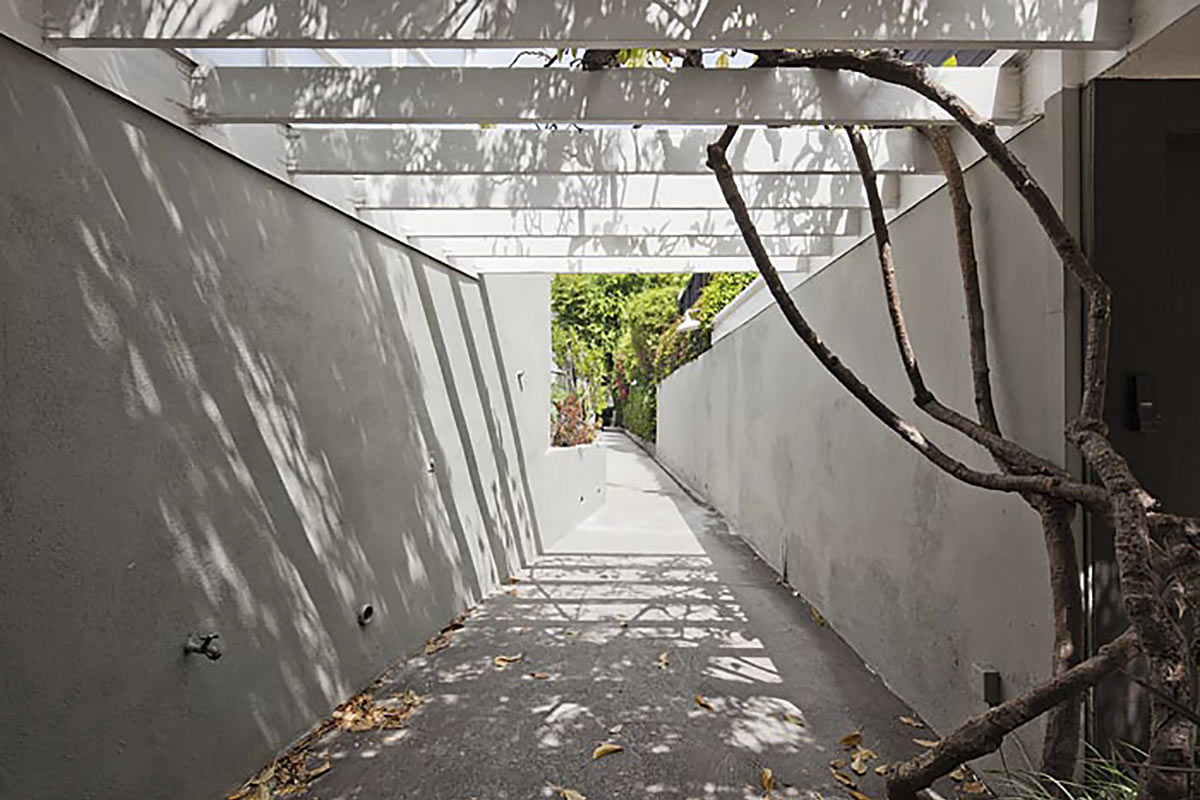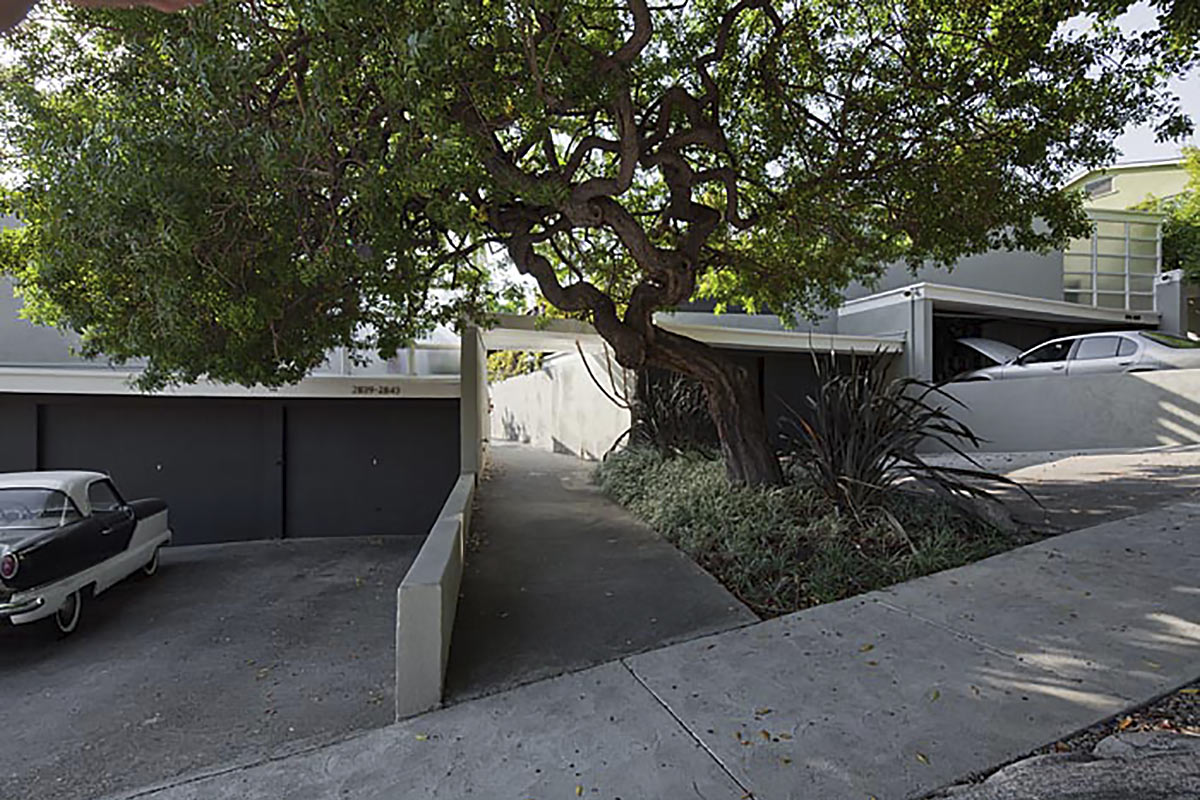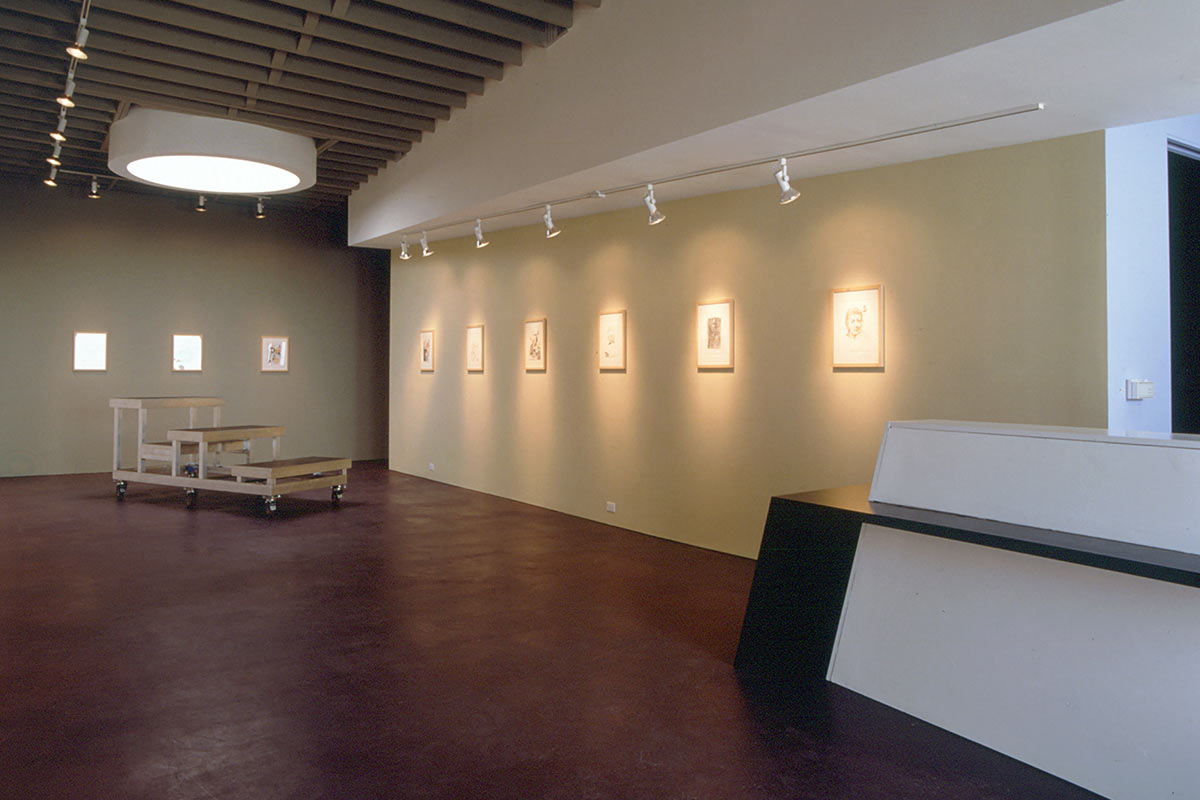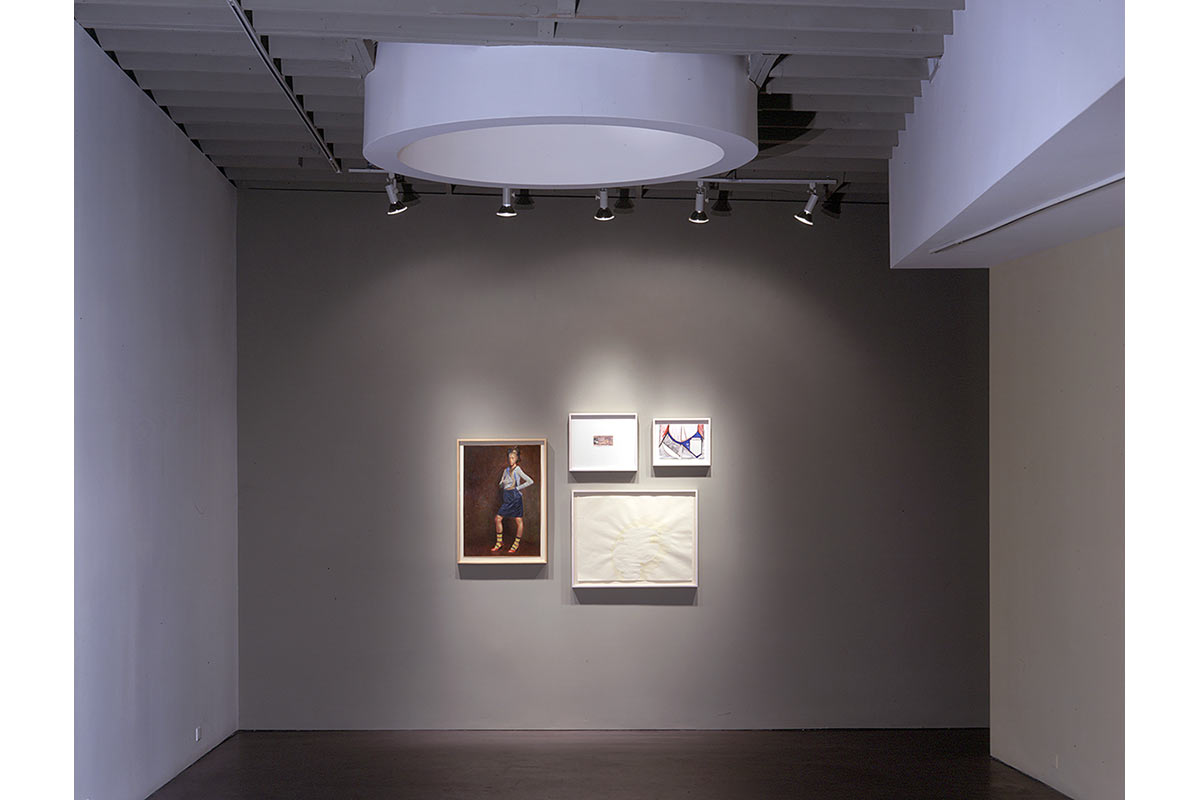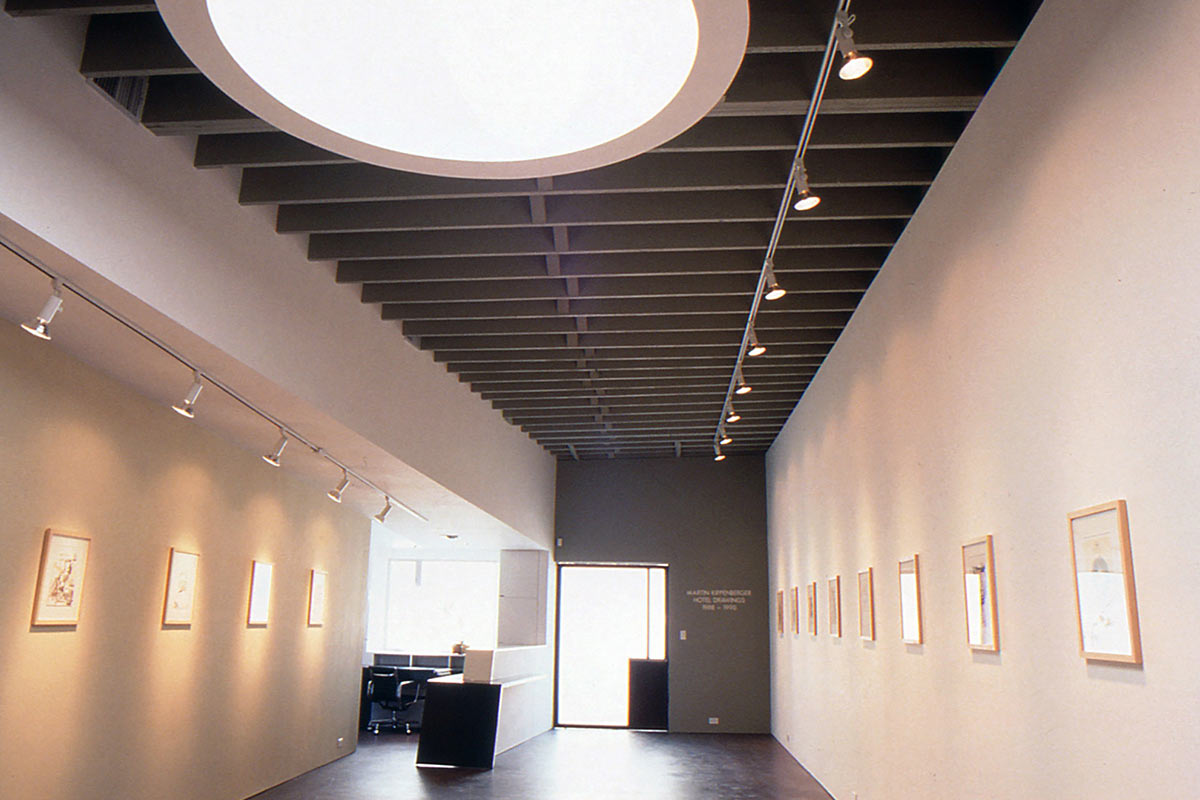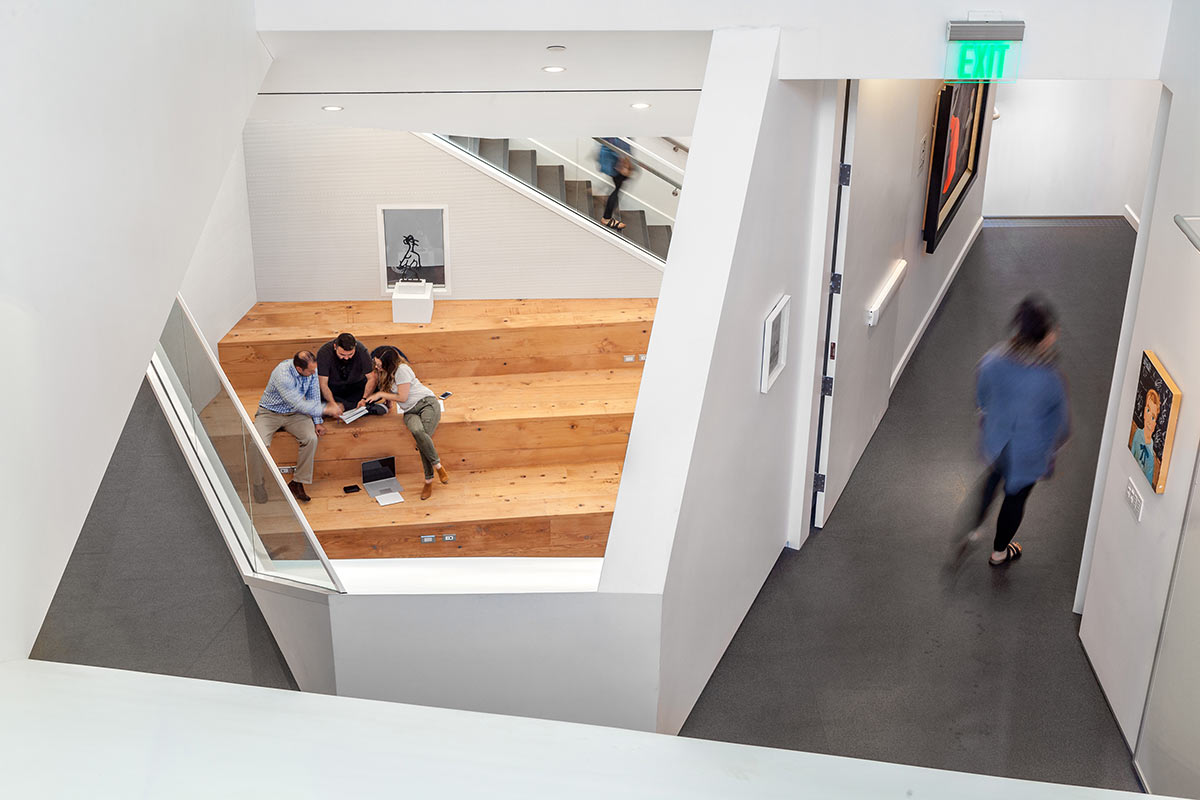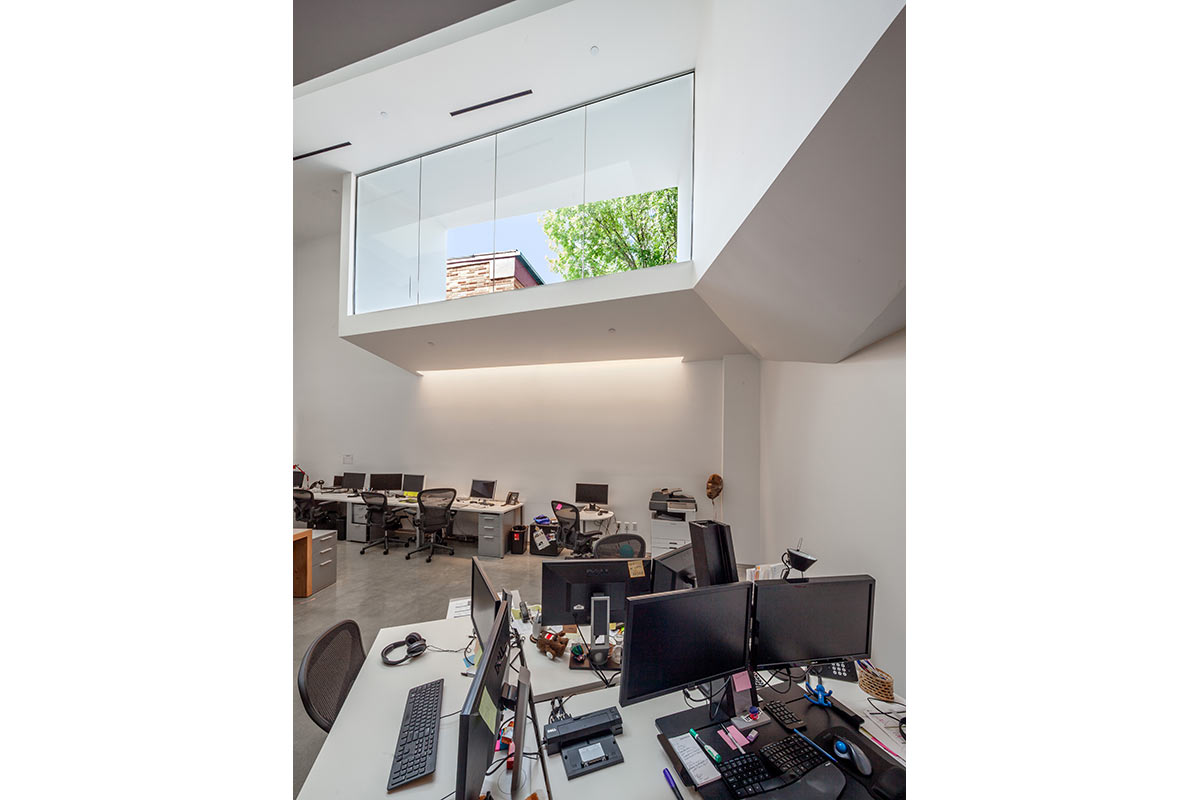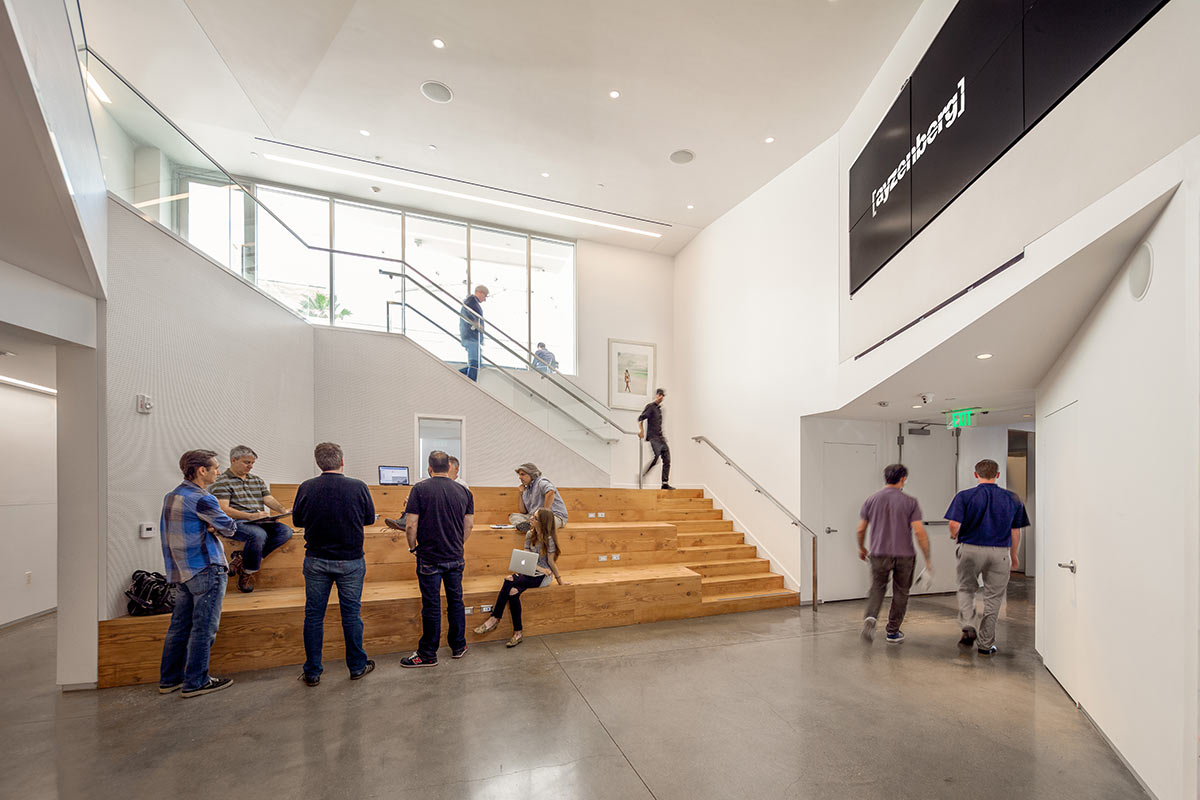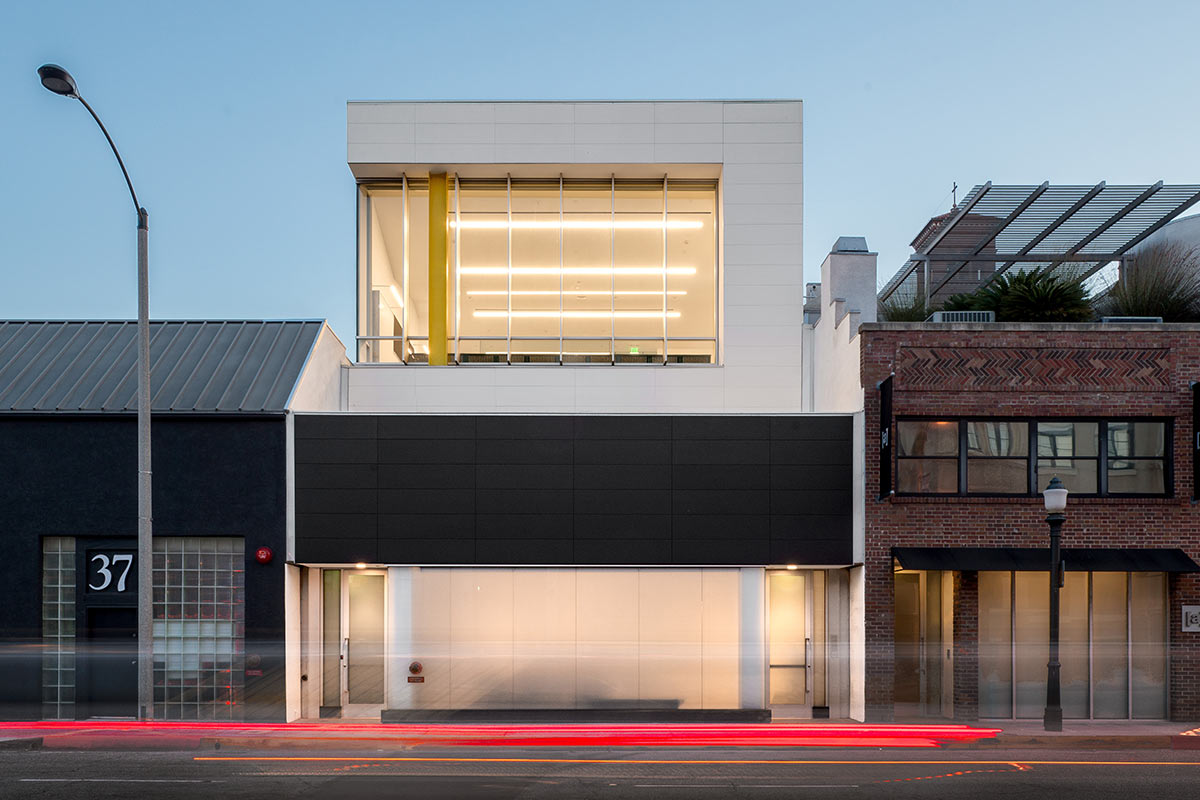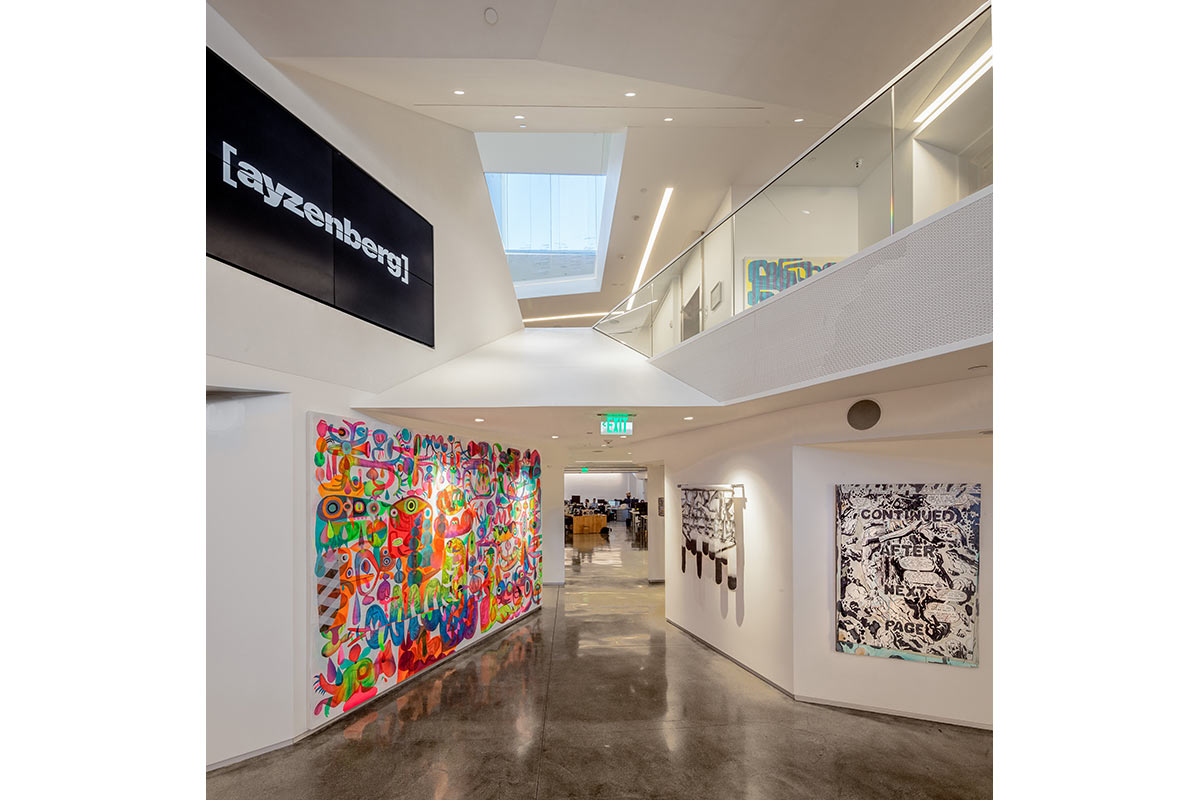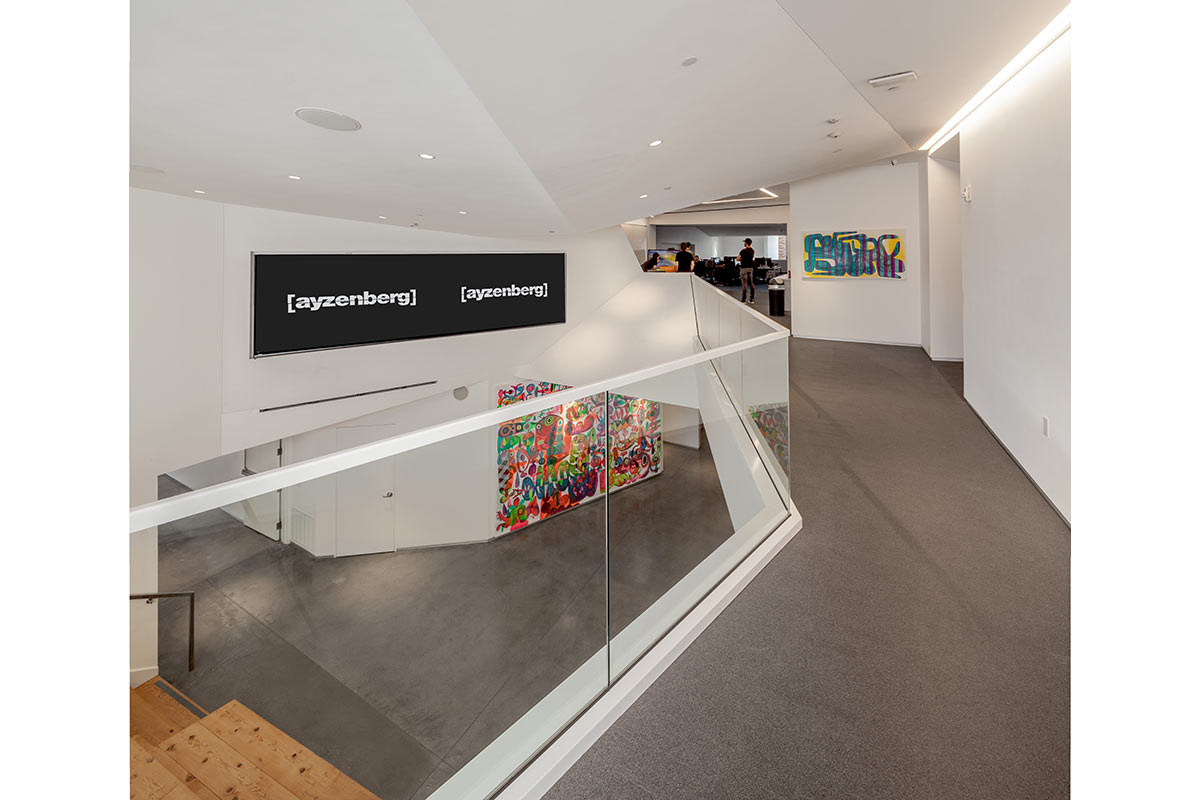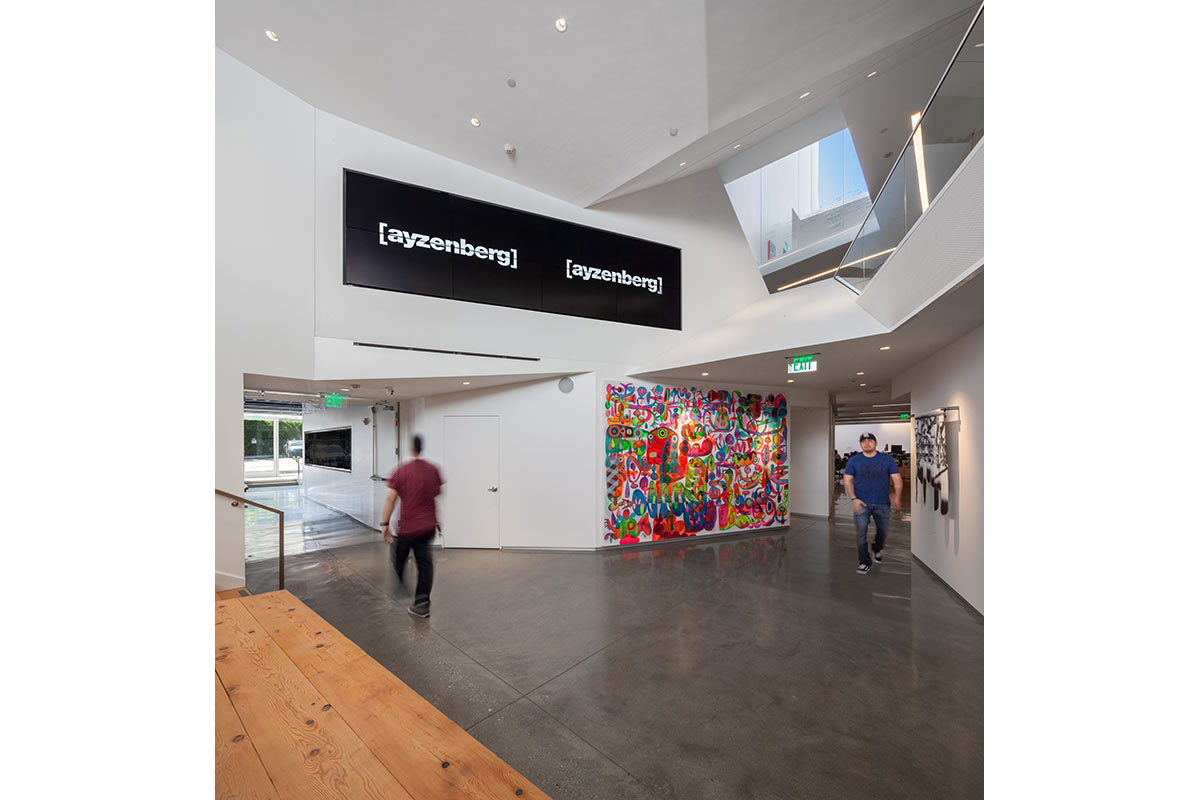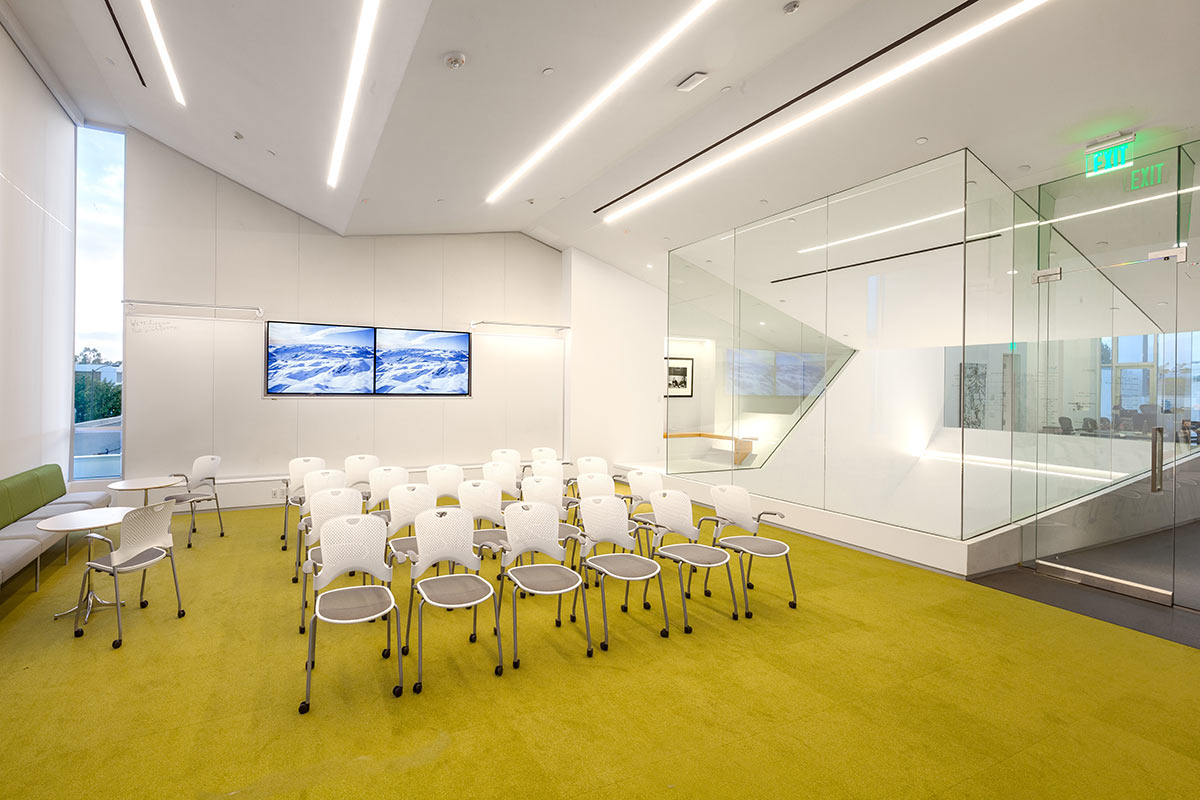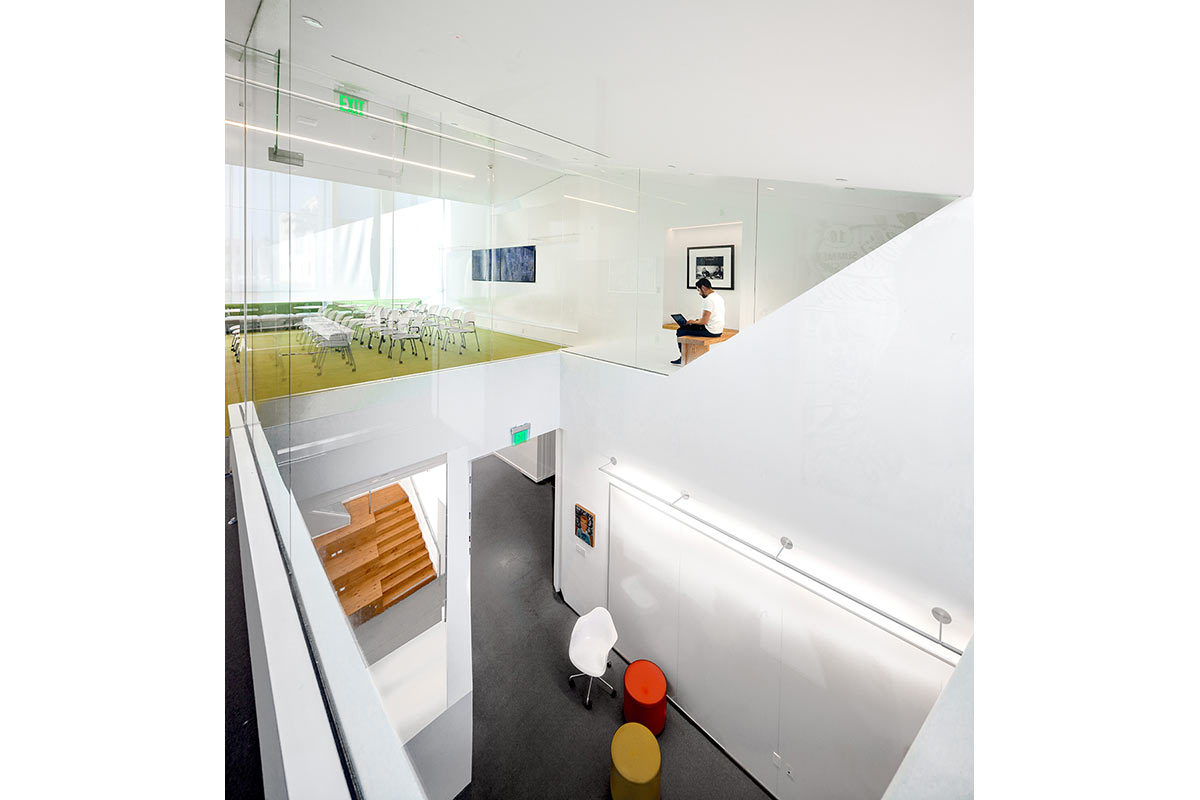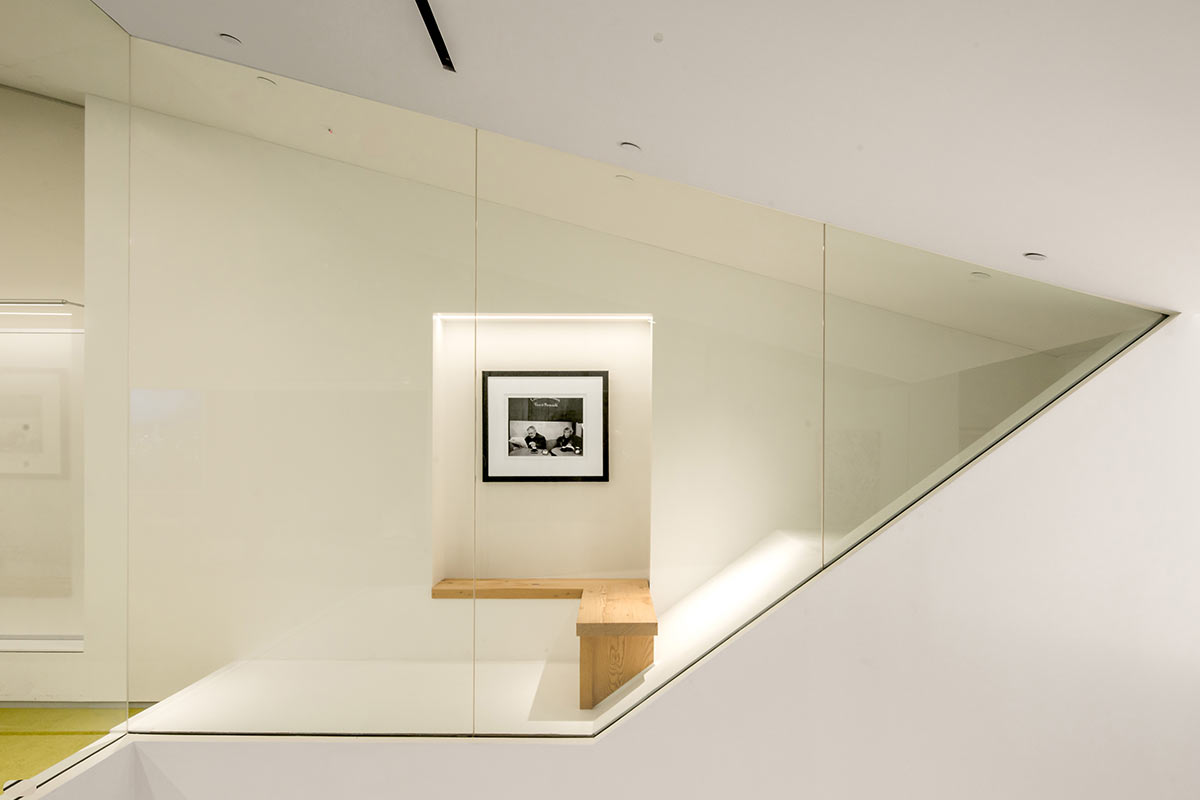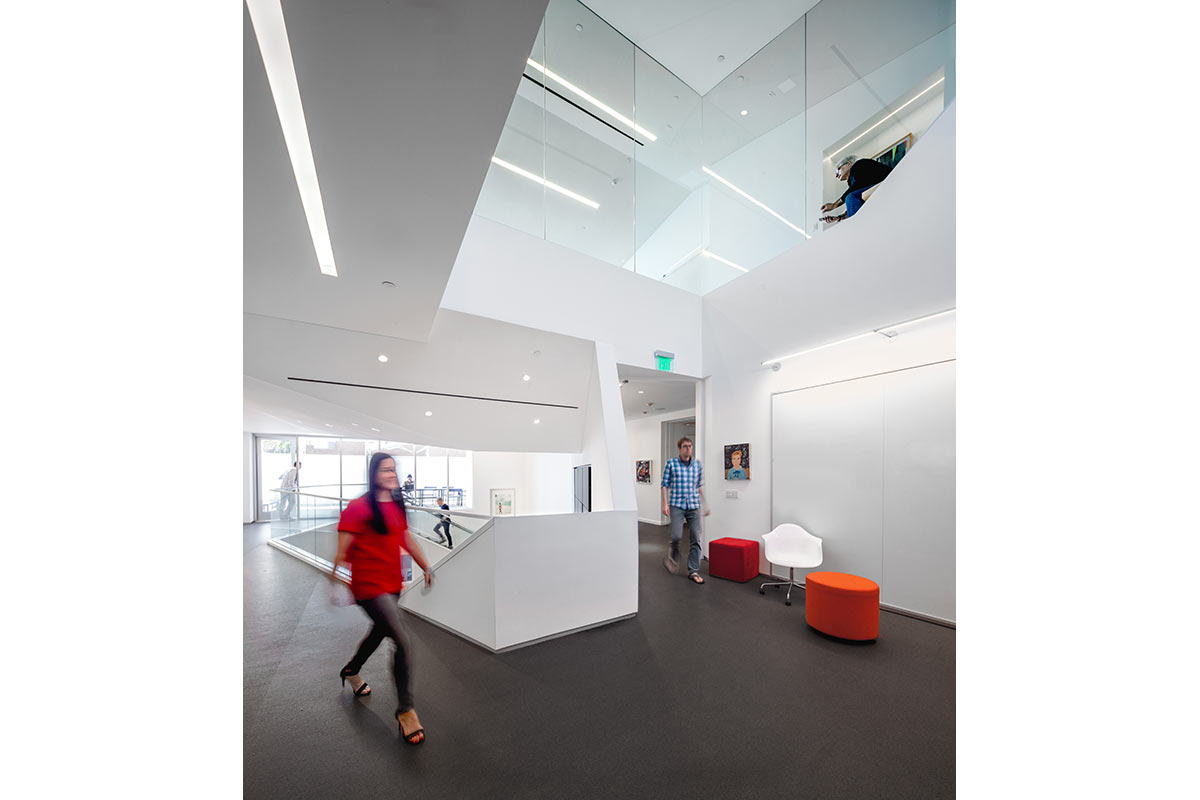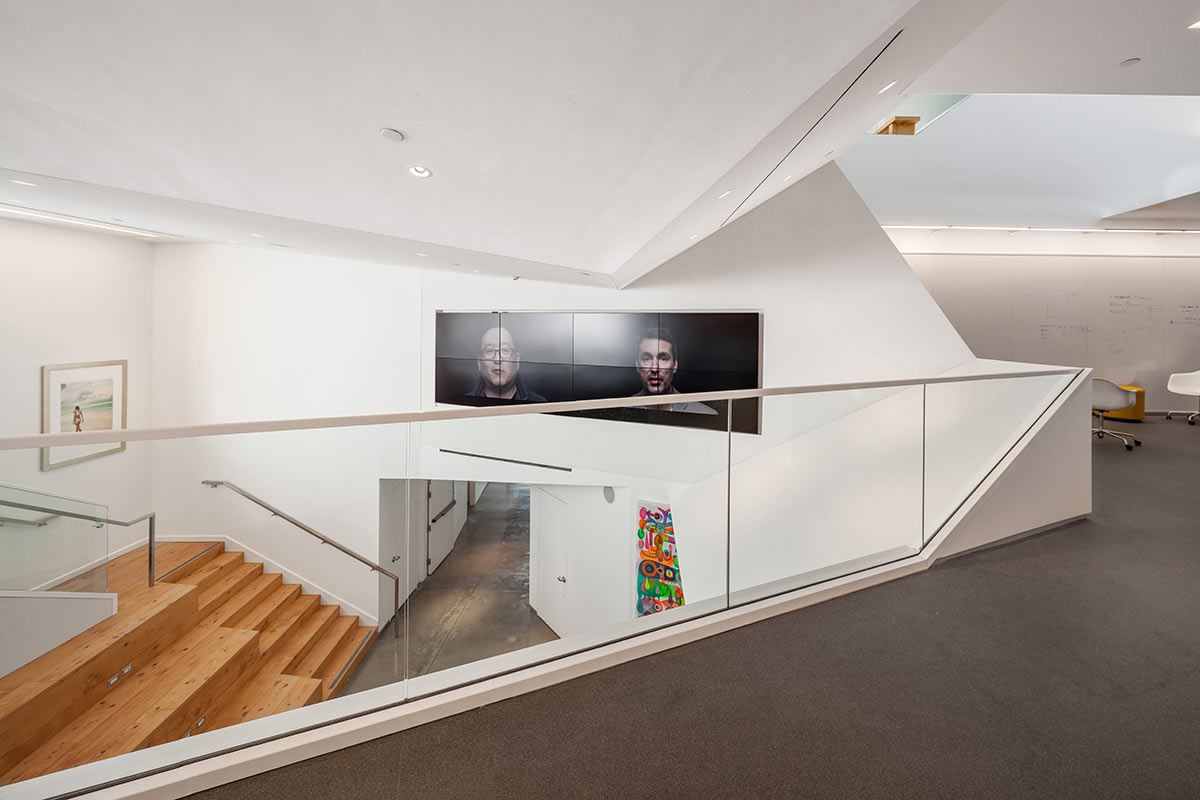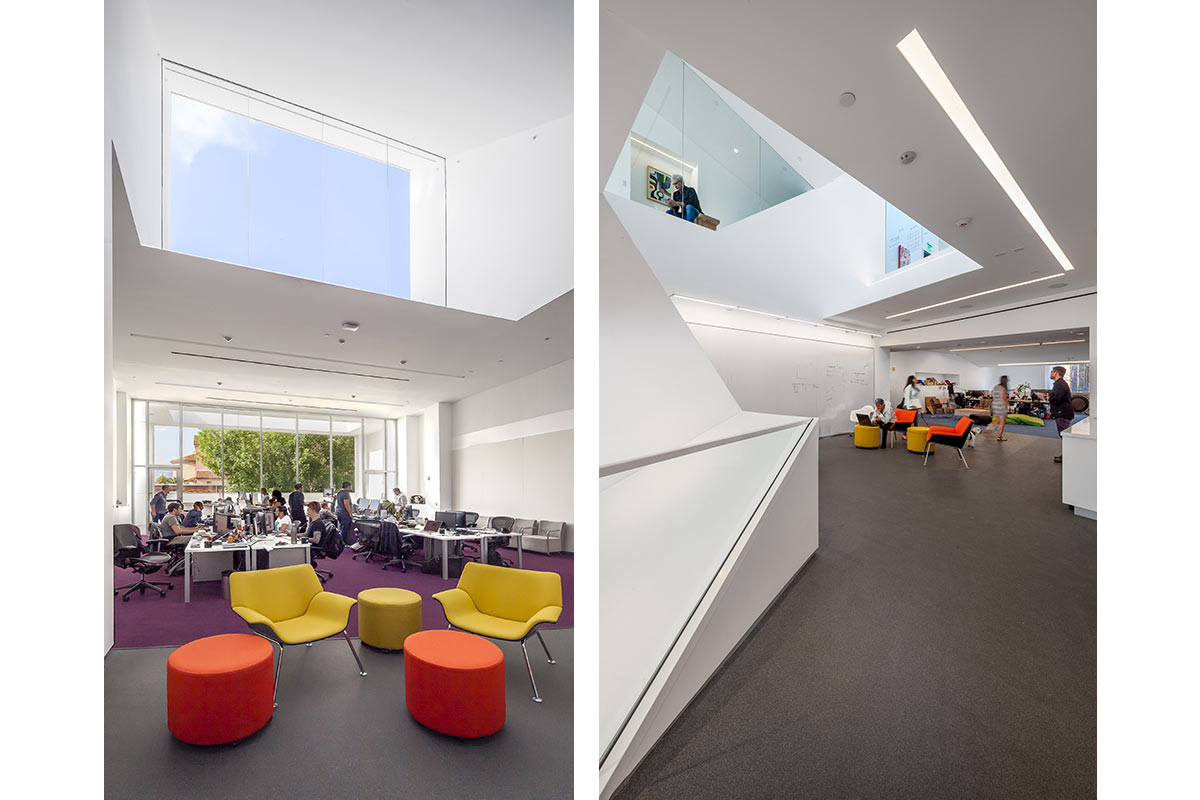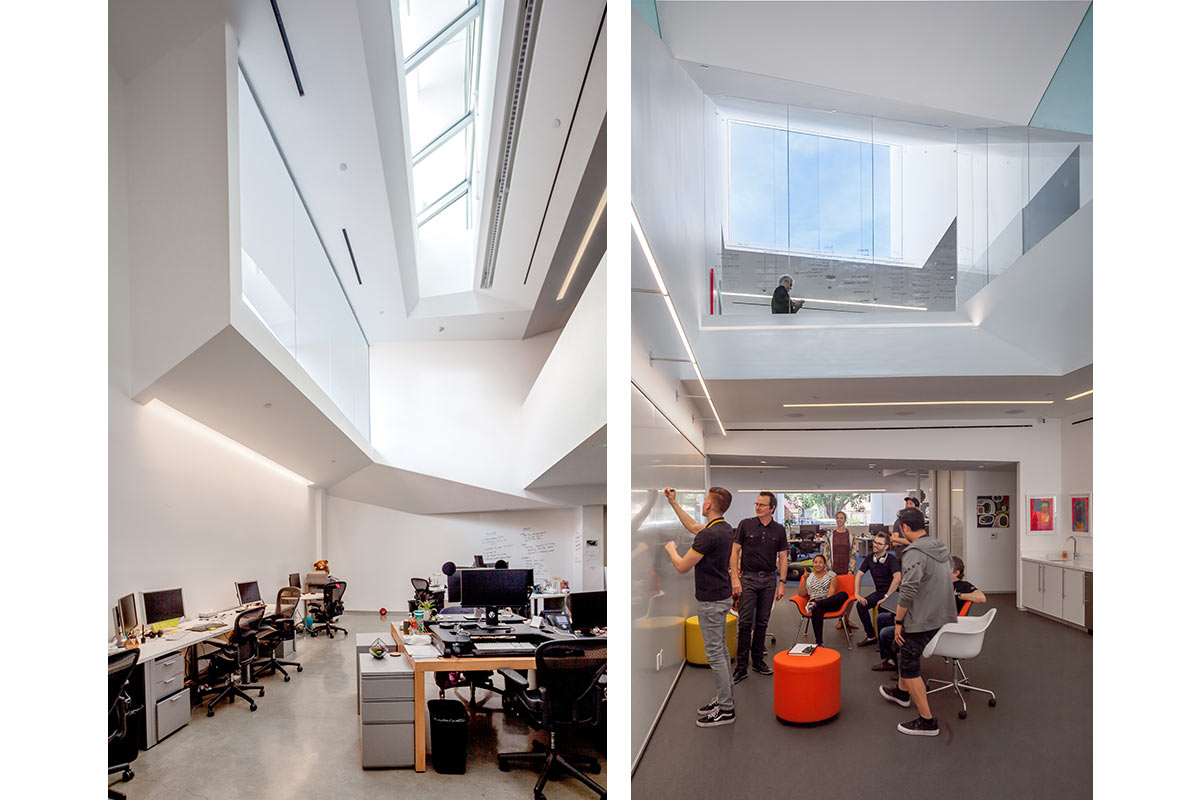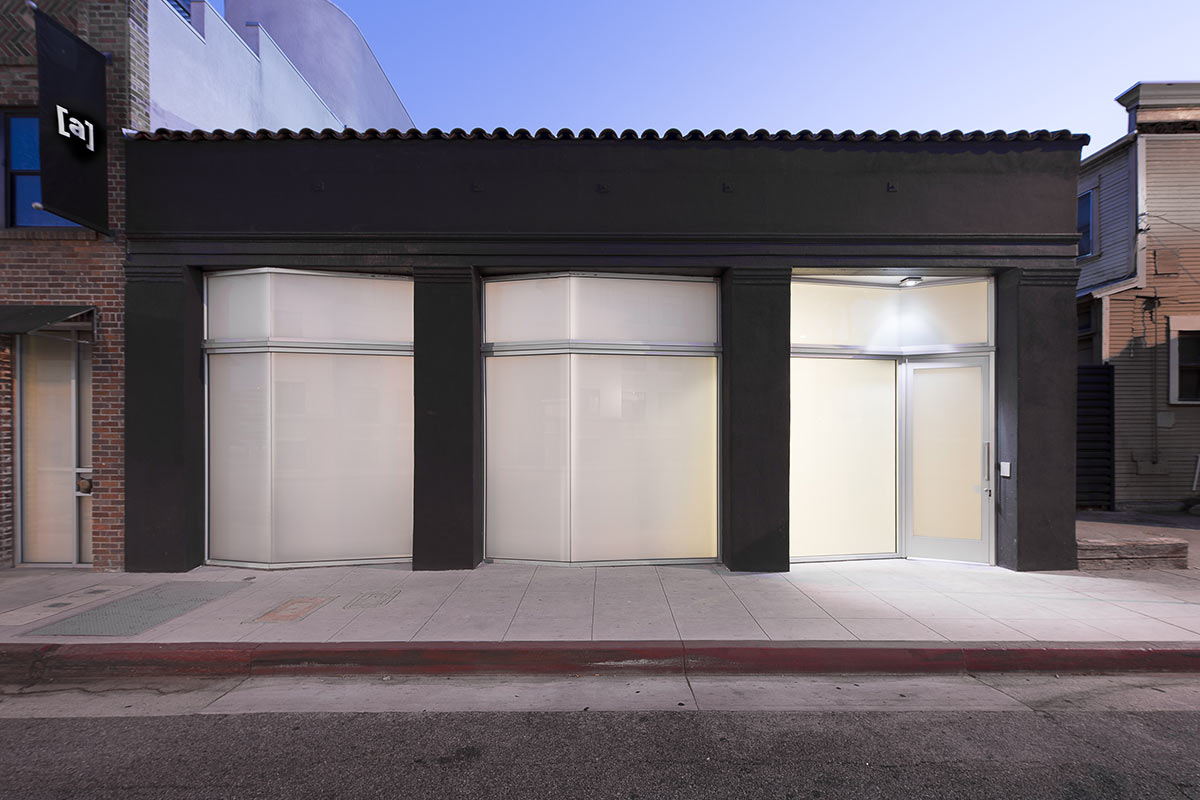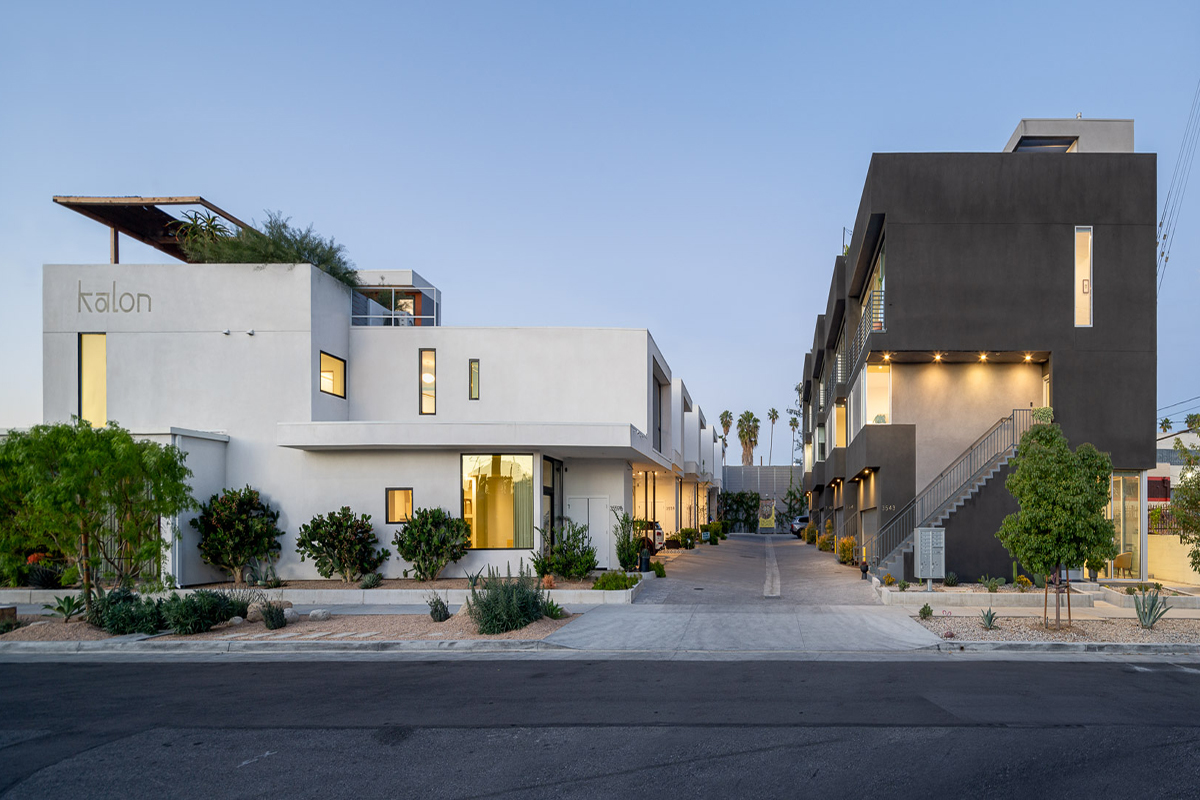
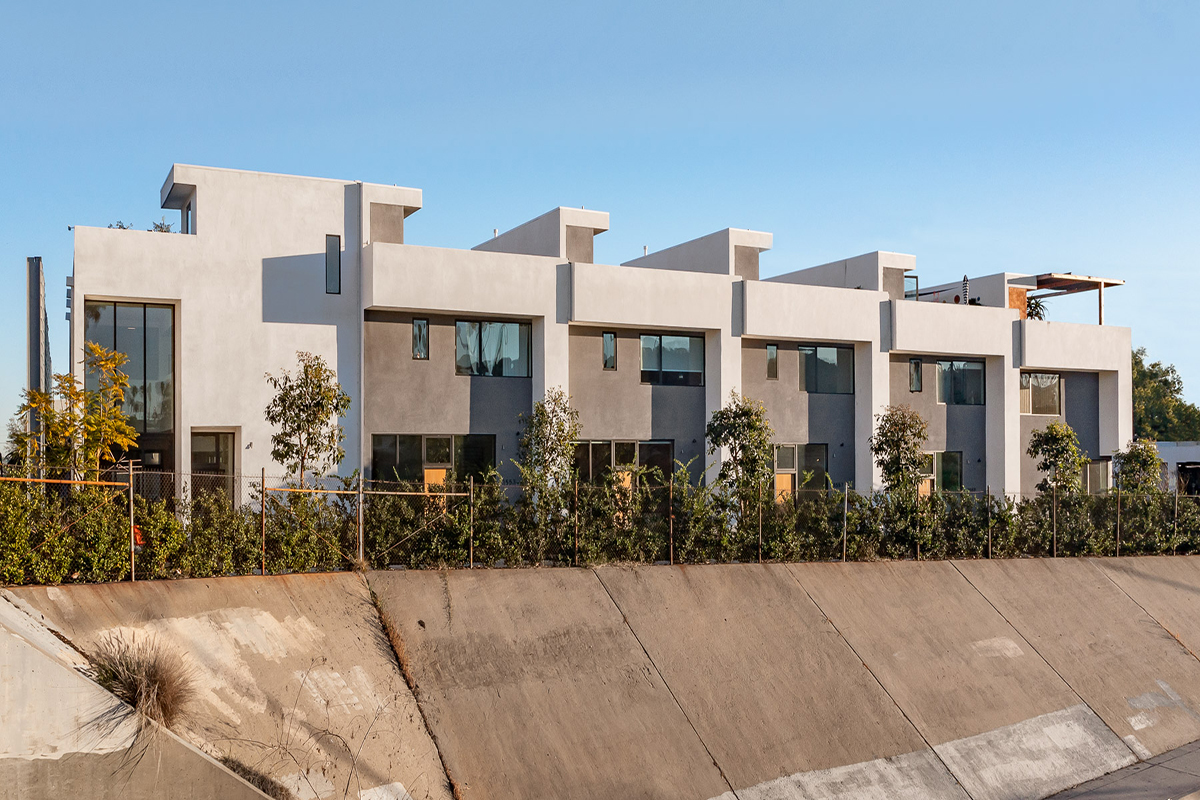
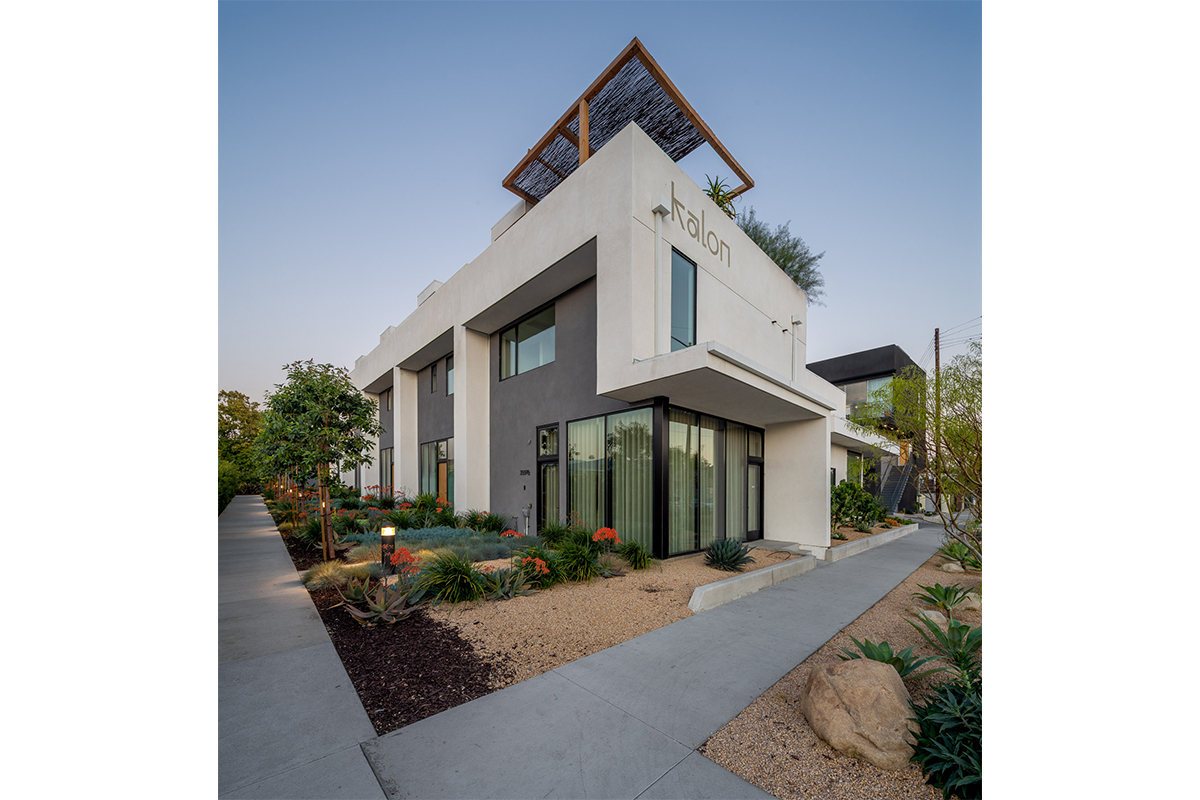
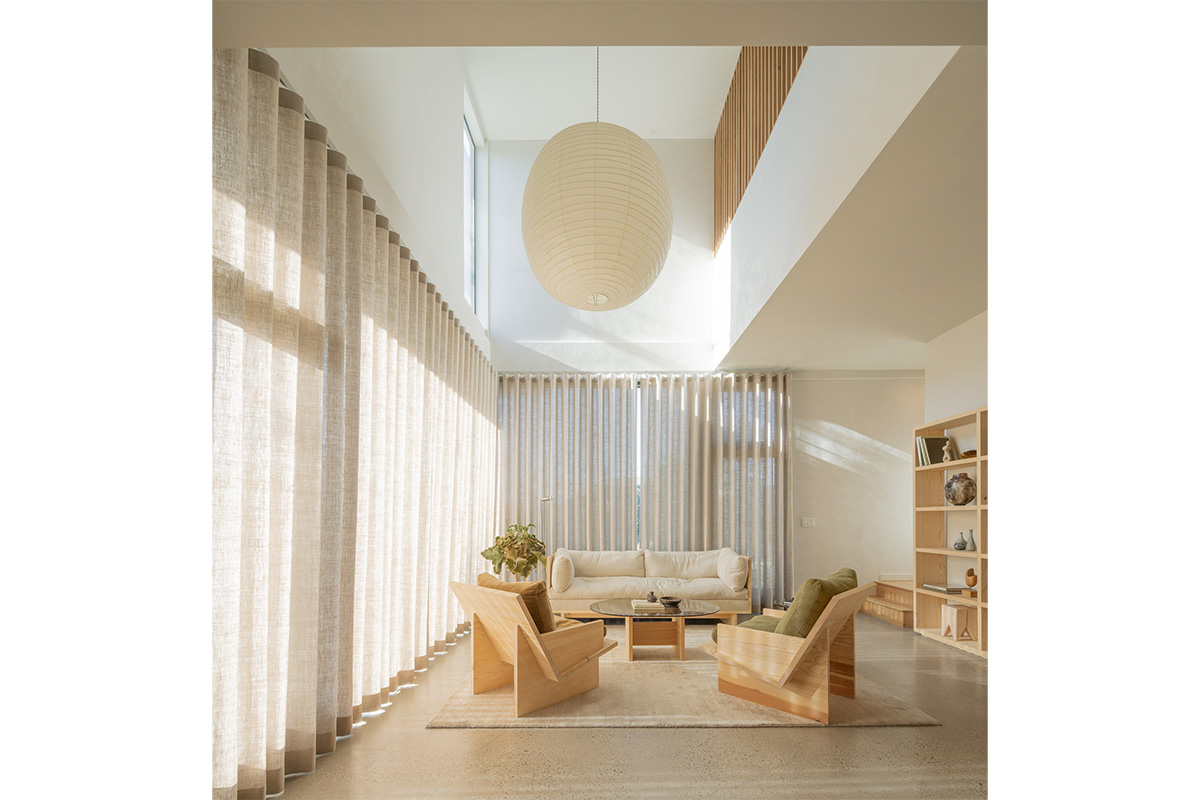
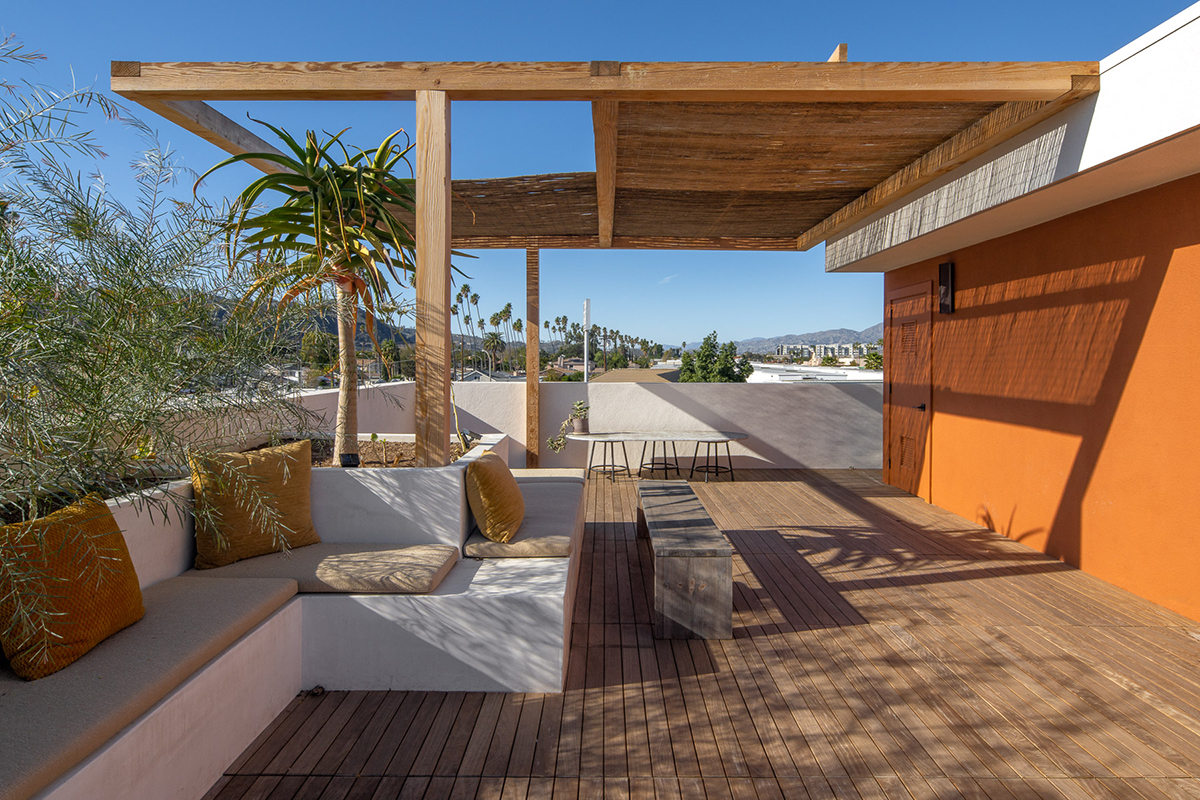
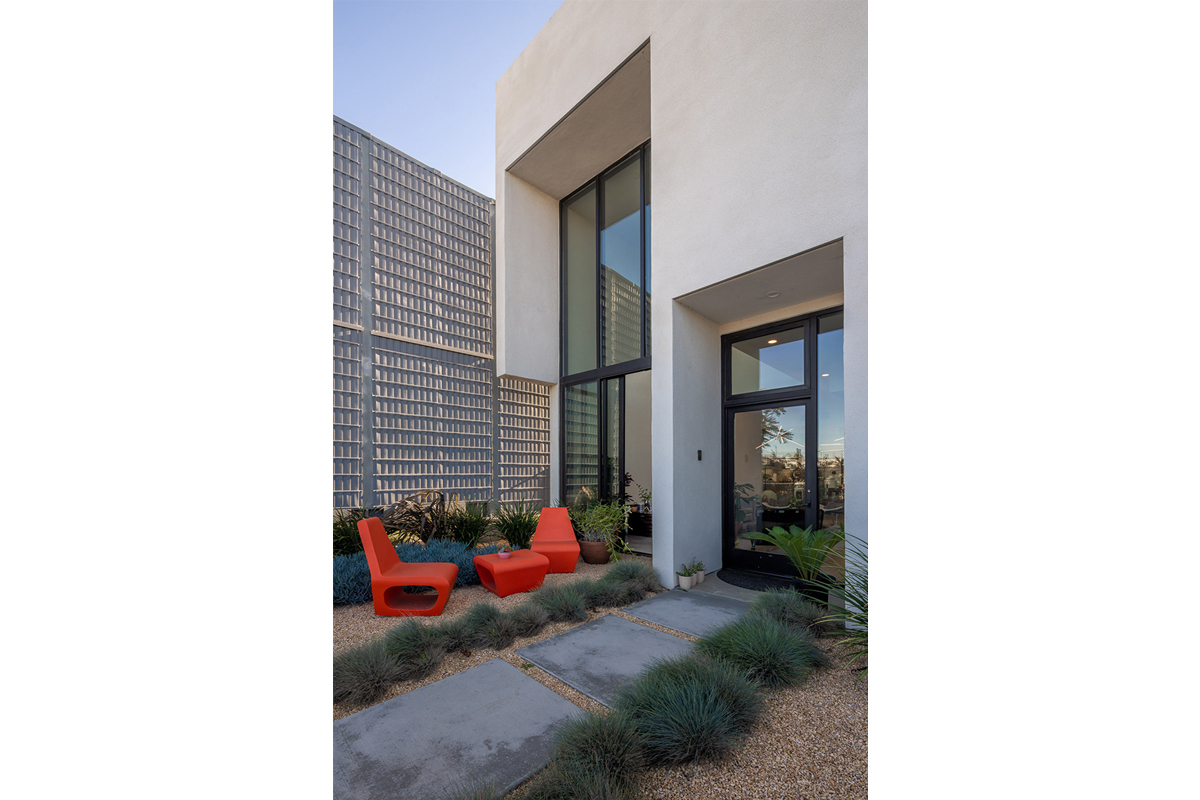
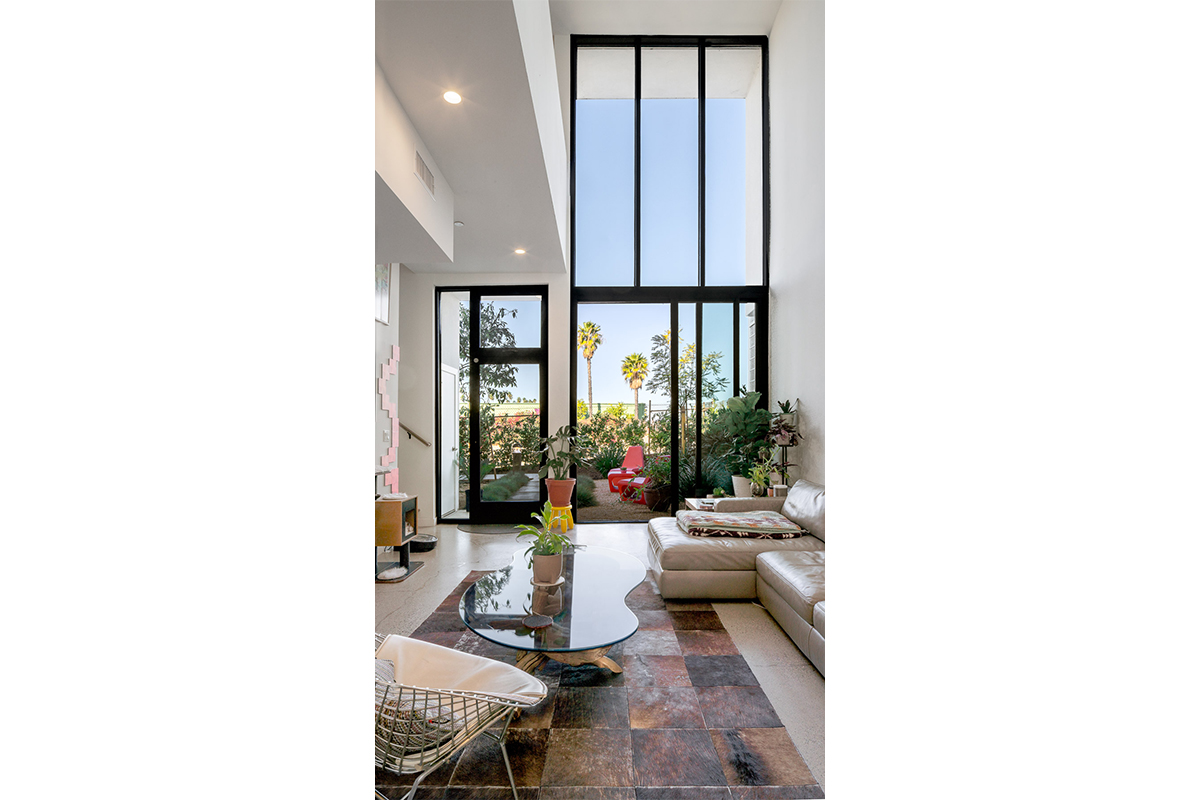

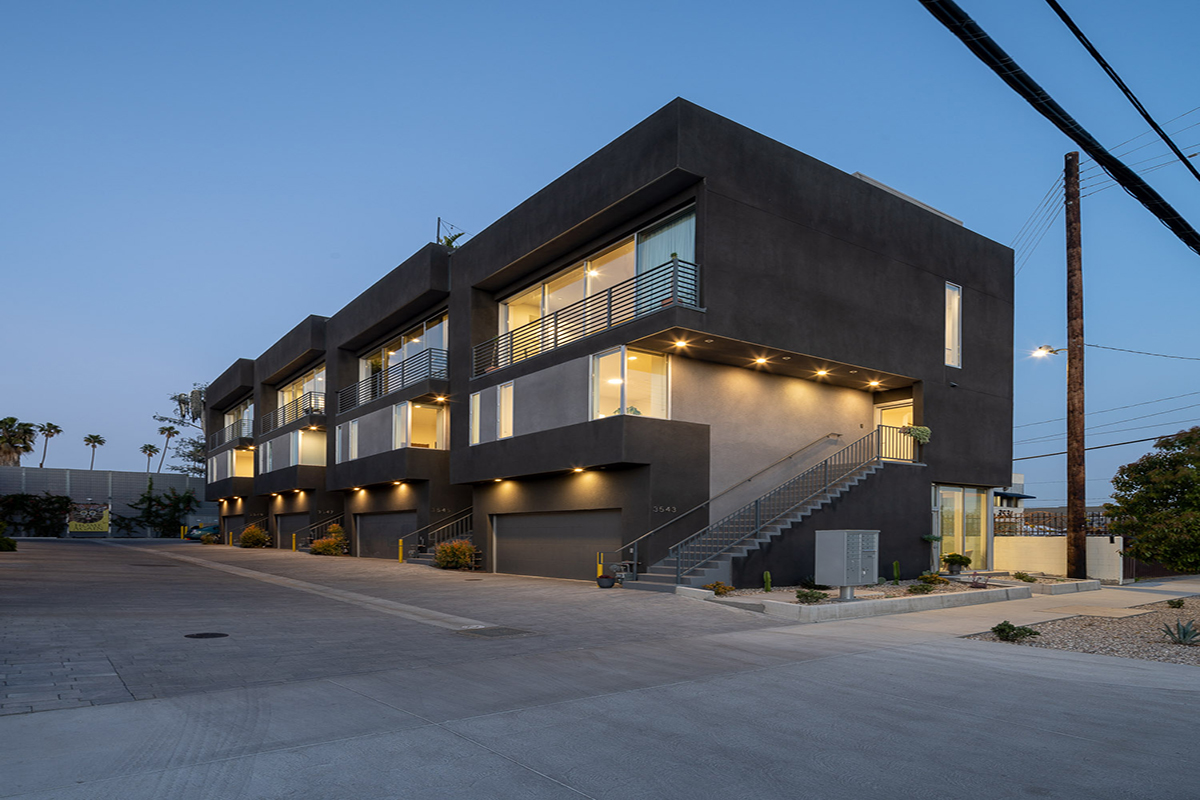
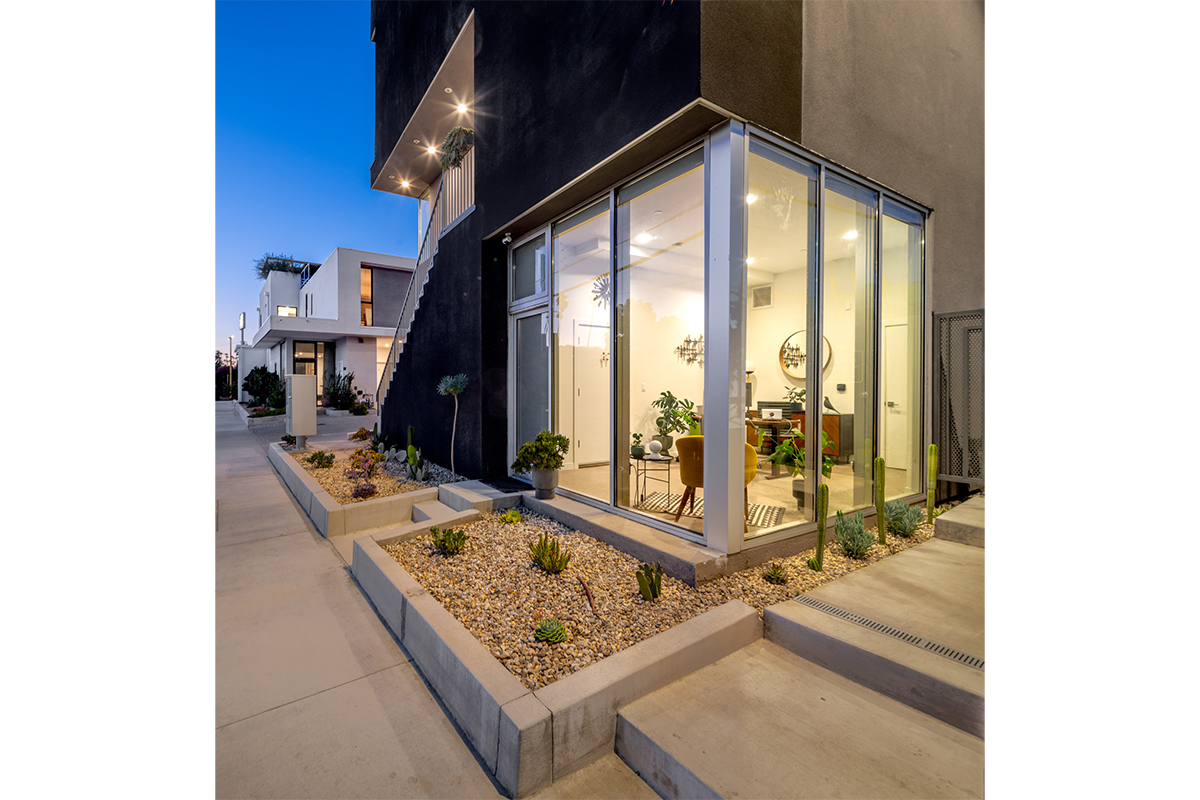

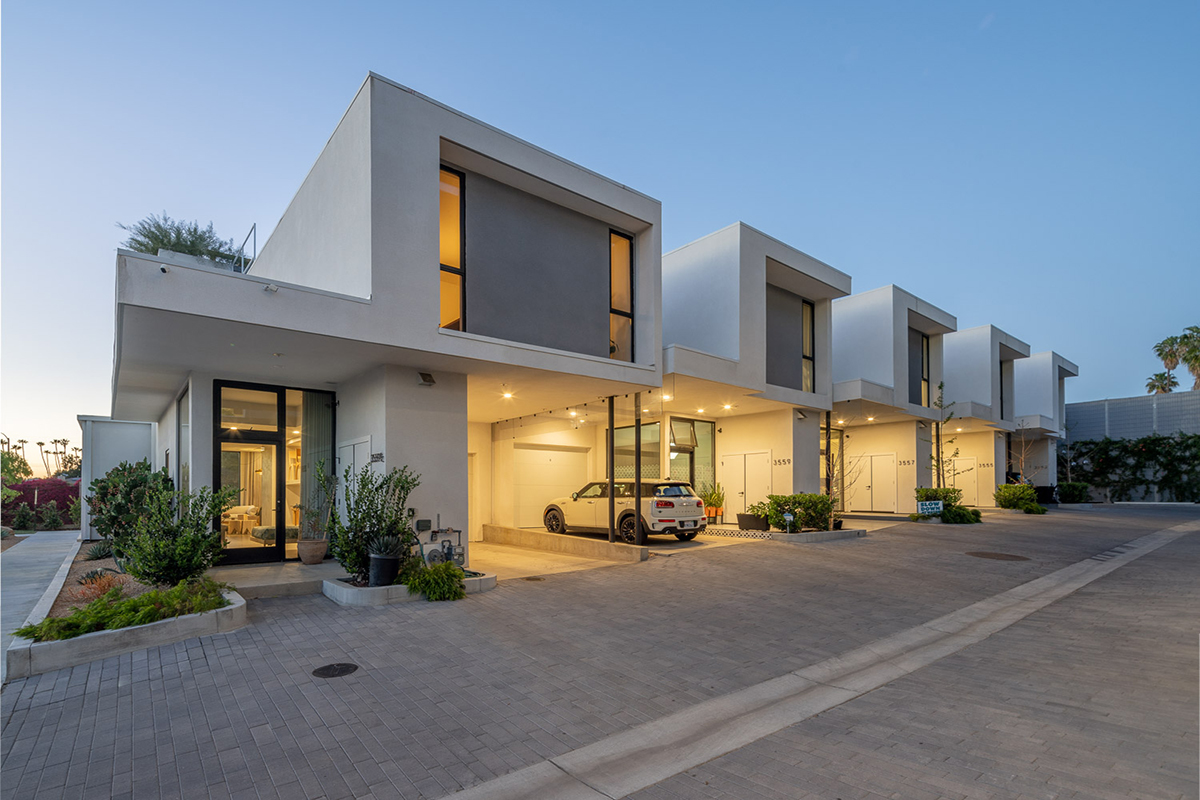
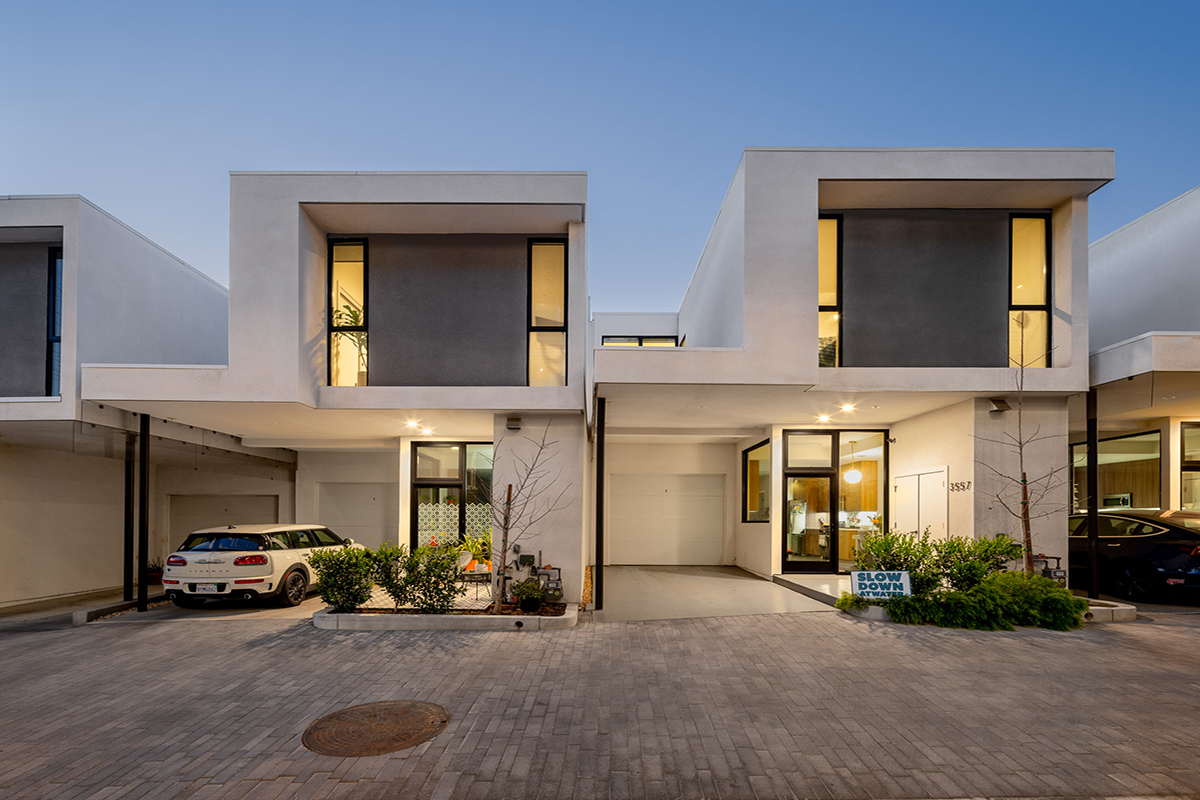
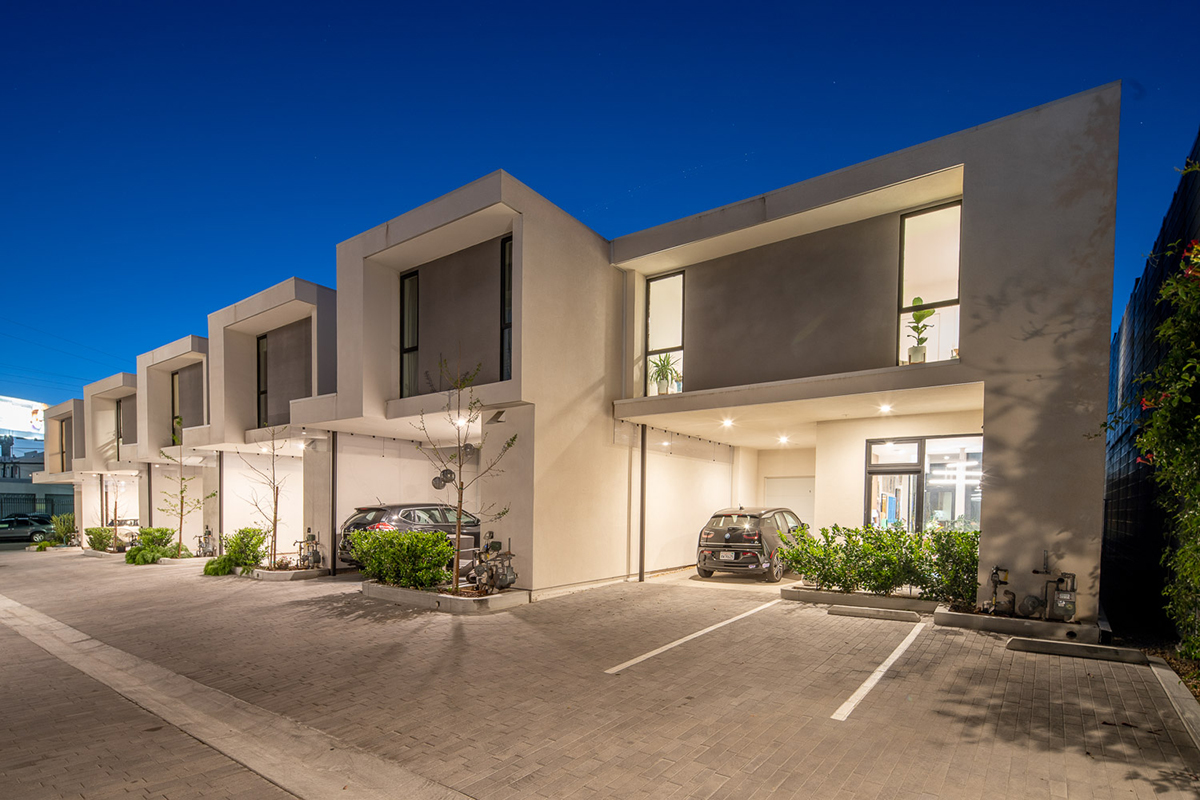
The site is located between a manufacturing zone to the east and a commercial zone to the south. The city’s live-work ordinance was applied for the first time to a small lot subdivision to legally allow in-home businesses at this location.
Living spaces for Unit Type A are placed on the third level, convenient to the roof terrace immediately above, and allowing views over the two-story Type B houses towards the Griffith Park hills. Residents are required to exit their garage into the mews and enter their home using the open-air stair that spills out into the mews, forming a stoop. There is no internal connection from the garage. The designated workspace is accessed from the side yard on the east and from the garage, but not directly from the residence above.
For Unit Type B, a single car garage and carport are arranged in tandem. A small patio is provided outside the kitchen and contiguous with the carport to create a semi-private space along the mews. This arrangement, together with the Unit A entry stoop across the way, will cause neighbors to enter the mews space to before accessing their car.
Private front yard gardens are located on the Glendale Blvd. frontage, similar to those on the Venice Beach walk streets, and directly access the public sidewalk leading to stores and restaurants in the commercial district.
It’s similar to the literary idea: in this architectural case, the design responds to the rhythms of daily life (such as with the carport/patio idea and its relation to the stairway/stoops across the mews to embody the daily routine of coming and going, building in a way for people to see their neighbors in public space), and also using the formal device of physical repetition, theme and variation, to create rhythm in the project’s visual, outward massing…giving it a visual heartbeat, so to speak. And the repetition, or beat, of the tall, wider black Type A units, with the low, narrower, white Type B units along the mews is a true syncopation.
CATEGORY | INFORMATION |
|---|---|
Project Type | Single-Family Townhouses |
Location | Atwater Village, Los Angeles, CA |
Status | Completed Fall, 2019 |
Size | Site Area:19,815 SF/.45 acre
Building Area: 16,600 SF |
